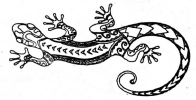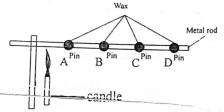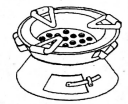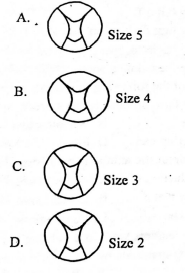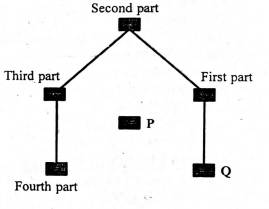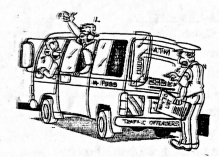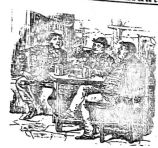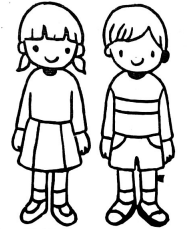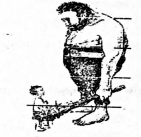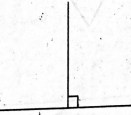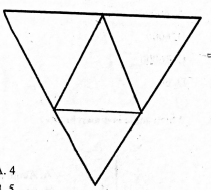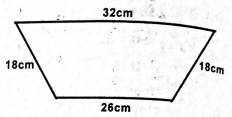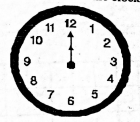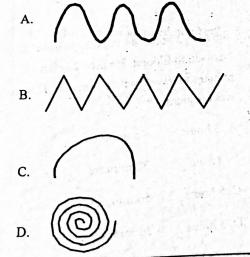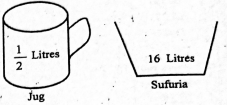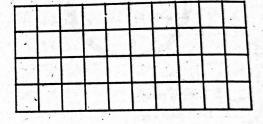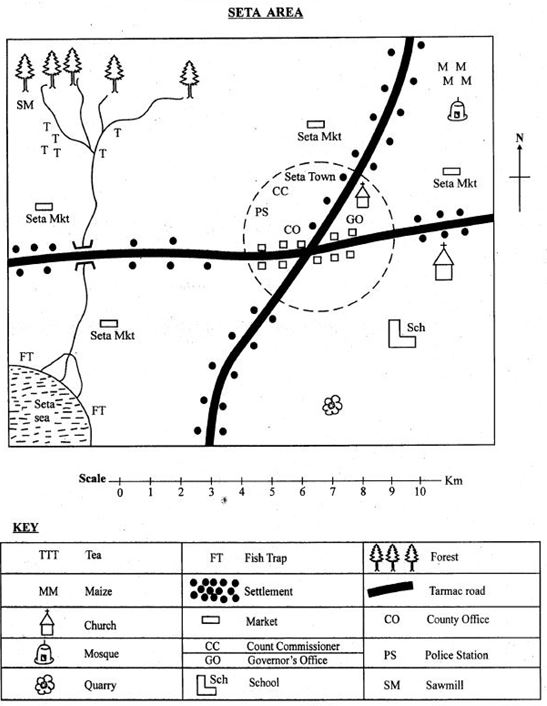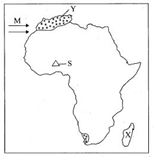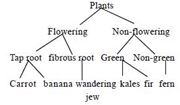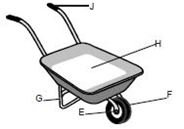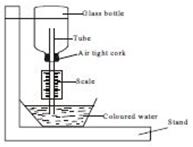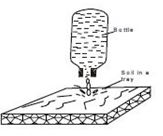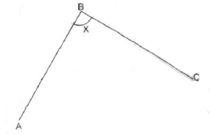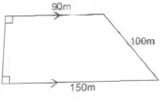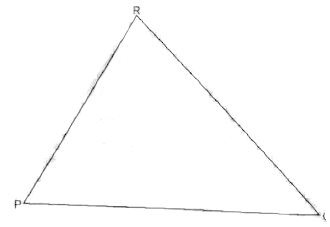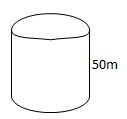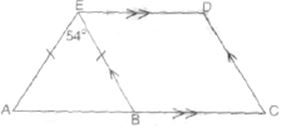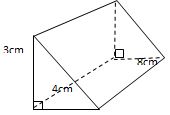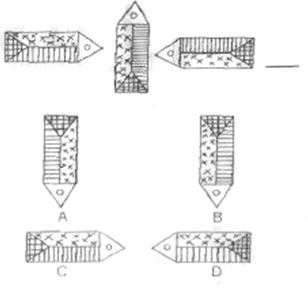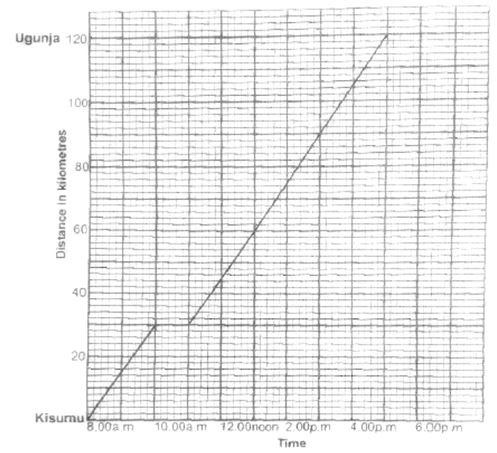Displaying items by tag: Set 4
Creative Arts and Social Studies Questions and Answers - Grade 5 School Based Assessment Opener Exams Term 1 2023 Set 4
A. ART AND CRAFT ACTIVITIES
- When drawing pictures, the parts that appear dark are called:-
- the coloured parts
- the hidden parts
- the parts facing light
- the dirty parts
- The technique of smearing colours onto a surface is kown as:-
- crayon etching
- Smudging
- Decorator
- Colouring
- The technique shown below is known as:-
- Gradation
- Etching
- Smudging
- Shading
- The following materials are used to make a smooth tonal gradation strip except:-
- Rubber
- Drawing papers
- Pencil
- Cylindrical container
- What do we call the drawing of non-moving objects?
- montage
- observation
- weaving
- still life composition.
- Grade 4 learners cut pictures and pasted on a manila paper. This is called:-
- Mosaic
- Montage
- Pasting
- Crayon etching
- The threads used in weaving are called warps and _______________________
- looms
- fibres
- wefts
- laces
- Which functional items are made from weaving technique?
- Sufuria and mat.
- Pot and dish
- Bucket and hat
- Cot and mat
- Which one is a source of hides?
- Bull
- Goat
- Hare
- Bird
- What do we call the strip of leather?
- skin
- membrane
- thong
- sling
B. MUSIC ACTIVITIES
- The songs sung in churches every sundays are known as:-
- Patriotic songs
- Sacred songs
- Lullaby songs
- Folk songs
- A descant recorder is played by:-
- Plucking
- Bowing
- Shaking
- Blowing
- What is the name of the part of the shaker below marked K?
- metals
- shakers
- rattles
- membrane
- Which of the following is a minim?
- When many people sing a song together, we call it _________________________ singing
- choral
- folk
- solo
- action
- The special clothes dancers wear during performance is called:-
- uniforms
- costumes
- kitenges
- sisal fibres
- Our National Anthem has _____________________ verses.
- four
- two
- one
- three
- Musical instruments played by either shaking or hitting are called:-
- Band
- Rhythm
- Percussion
- Instrumentalists
- The speed of sound is called:-
- Tempo
- Melody
- Pitch
- Rhythm
- Which one is the second line of the National Anthem?
- Haki iwe ngao na mlinzi
- Ilete baraka kwetu
- Tufanye sote bidii
- Natukae na undugu
C. SOCIAL STUDIES ACTIVITIES
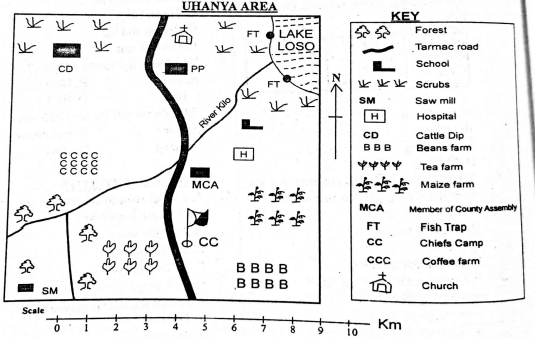
- What is the direction of Saw Mill from the Hospital?
- North East
- South West
- North West
- South East
- What is the main means of transport in Uhanya Area?
- Road
- Railway
- Water
- Air
- Uhanya Area is likely to be a:-
- County
- Senate
- Ward
- Constituency
- Which economic activity is NOT carried out in Uhanya Area?
- Fishing
- Crop farming
- Lumbering
- Mining
- People in Uhanya area are:-
- Pagans
- Muslims
- Christians
- Traditionalists
- Which physical feature is shown below?
- Lake
- Valley
- Plateau
- Plain
- This is a traditional house
It belongs to _________________________ community.- Kamba
- Maasai
- Ameru
- Luo
- On 1st June we celebrate:-
- Jamhuri Day
- Mashujaa Day
- Labour Day
- Madaraka Day
- The point marked S is likely to be
- South West
- South East
- West South
- North West
- Which one of the following is NOT a historic built environment?
- Monument
- Museu
- Mountain
- Historical site
- We depend on _______________________ to make desks and chairs.
- Tailors
- Nurses
- Carpenters
- Teachers
- ___________________________ is the smallest county in Kenya
- Nairobi
- Nakuru
- Mombasa
- Kisumu
- A list of activities carried out in a school everyday is called school _____________________________
- routine
- motto
- history
- core value
- Which type of trade involves the use money?
- Currency trade
- Barter trade
- Exchange trade
- Money trade
- Which type of settlement is shown below?
- Clustered
- Nucleated
- Sparse
- Linear
- A compass has __________________________________ cardinal points.
- three
- four
- eight
- two
- Which one is NOT an aspect of culture our country?
- Dressing
- Artefacts
- Marriages
- Songs and dance
- Which one is NOT an economic activity
- Trading
- Farming
- Fishing
- Weeding
- Who is the current president of Kenya?
- Uhuru Kenyatta
- Rigathi Gachagua
- Raila Amolo Odinga
- William Ruto
- Every family is headed by a _____________________________.
- child
- grandfather
- mother
- father
D. CHRISTIAN RELIGIOUS ACTIVITIES
- Who among the following was told to go and dip himself in River Jordan?
- Naaman
- Bartimaus
- Lazarus
- Jonah
- Which disciple did Jesus love most?
- Peter
- Mark
- John
- James
- Which wild animals killed the 42 boys who made fun of prophet Elisha?
- Lions
- Snakes
- Bears
- Leopards
- The following are attributes of God except
- Creator
- Love
- Holy
- Ugly
- _____________________ killed a lion with his bare hands.
- Daniel
- Jesus
- Jonah
- Samson
- Who is NOT a member of a nuclear family?
- Father
- Daughter
- Mother
- Aunt
- Which one of the following books is NOT a gospel?
- Luke
- Mark
- Exodus
- John
- King. __________________ wanted Balaam to curse the people of Israel.
- Herod
- Ahab
- Balak
- Saul
- There are _____________________ books in the Old Testament.
- 66
- 36
- 39
- 27
- The best use of leisure time is to:-
- Visit friends
- Visit relatives
- Visit the old
- Watch a christian movie
D. ISLAMIC RELIGIOUS ACTIVITIES
- Which one of the following Surahs warns Muslims against slandering and backbiting?
- Al-Alaq
- Al-Quirish
- Humizah
- Inshirrah
- The surah that was revealed to prophet Muhammad to mention 'read' was
- Lahab
- Swamad
- Al-Fiyl
- Alaq
- The Surah Lahab is also known as the:-
- water
- flames
- soil
- abudance
- We have different duties of the Angels of Allah. Who among them is responsible for wahyi?
- Jibril
- Mikail
- Rwadhar.
- Alid
- None is to be worshipped but Allah, Muhammad is His:-
- Prophet
- Messenger
- Servant
- Son
- The Kalima should be repeatedly recited by:-
- Orphans
- New converts
- All muslims
- Imams
- Who among the following is a recepient of zakkat?
- Traveller
- New convert
- Orphan
- Imams
- Who among the prophets of Allah was given the book of Taurat?
- Nabii Issa (AS)
- Nabii Ibrahim (AS)
- Nabii Dawud (AS)
- Nabii Musa (AS)
- Which one of the following is not an obligatory prayer?
- Fajr
- Dhuhr
- Magharib
- Fitr
- An hypocrite has ________________ sinus.
- three
- four
- two
- one
MARKING SCHEME
CRTART
- B
- B
- A
- D
- D
- B
- C
- D
- A
- C
MUSIC
- B
- D
- C
- B
- A
- B
- D
- C
- A
- B
SOCIAL STUDIES
- B
- A
- C
- D
- C
- C
- B
- D
- A
- C
- C
- B
- A
- A
- D
- B
- B
- D
- D
- D
C.R.E
- A
- C
- C
- D
- D
- D
- C
- C
- C
- C
I.R.E
- C
- D
- B
- A
- B
- B
- B
- D
- A
Integrated Science Questions and Answers - Grade 5 School Based Assessment Opener Exams Term 1 2023 Set 4
A. SCIENCE & TECHNOLOGY
- Three of the following are characteristics
of all living things. Which one is NOT?- They breathe
- They reproduce
- They respond to changes.
- They move from one place to another.
- Oesophagus is also called:-
- Windpipe
- Gullet
- Trachea
- Liver
- The main source of heat energy is:-
- The sun
- jiko
- Gas lamp
- An electric heater
- This animal can be classified as:-
- Fish
- Mammal
- Reptile
- Amphibian
- A _______________________ provides security to human beings.
- horse
- camel
- dog
- lion
- Which one cannot be used to form ashadow?
- stone
- ball
- wood
- glass
- Which one is a protective device while handling small animals?
- vest
- cap
- gloves
- socks
- Which pair of teeth is used to chew food?
- Canine and incissor
- Incissor and premolar
- Molar and canine
- Premolar and molar
- Which part of the digestive system are water and salts absorbed?
- Large intestine
- Small intestine
- Stomach
- Rectum
- The diagram below shows a sense organ for:-
- sight
- hearing
- smell
- tasting
- Which one can be used to transport more water?
- Jerricans
- Buckets
- Dams
- water tankers
- Grade 4 learners put the items in water. Which one did not float?
- stone
- feather
- paper
- plastic plate
- Digestion of food in human beings starts in the:-
- stomach
- mouth
- small intestines
- large intestines
- Which pin fell down last?
- A
- B
- C
- D
- Materials that allow all the light to pass through are called:-
- Opaque objects
- Transparent objects
- Transluscent objects
- Trans - opaque
- Which one is not a state of matter?
- Liquids
- Gases
- Dust
- Solids
- Which one is a harmful non-green plant?
- Yeast
- Penincilin
- Mould
- Mushroom
- Which of the parts of a computer displays the information?
- C.P.U
- Monitor
- Keyboard
- Mouse
- Heat from the sun reaches us through:-
- Radiation
- Conduction
- Convection
- Shining
- Which one does not make environment dirty?
- wind
- pollutant
- perfume
- Air
B. HOMESCIENCE ACTIVITIES
- Which of the following materials cannot be used to make a móp as a cleaning equipment?
- Twigs
- String
- Long grass
- Plastic bottles
- Which one is a legume?
- Sorghum
- Wheat
- Greengram
- Cassava
- Which one cannot be used to make shoes?
- Leather
- Plastic
- Canvas
- Polythene
- Which personal item is used to dry our body after bath?
- Towel
- Blanket
- Handkerchief
- Duster
- When sewing a cloth using a needle, we protect our thumbs using:-
- a pin cushron
- a thimble
- a needle
- a tape measure
- Which fuel is used in the diagram below?
- paraffin
- gas
- firewood
- charcoal
- Which one of the following is NOT needed for good health?
- shelter
- rest
- food
- sleeping the whole day
- Which type of medicine is shown below?
- syrup
- capsule
- tablet-
- injection
- Which one is a communicable disease?
- Tooth ache
- Flu
- Vomiting
- Marasmus
- Paul takes bath in a room in their house. This room is called:-
- Dining room
- Kitchen
- Bathroom
- washroom
- Midday meal is also known as:-
- Lunch
- Supper
- Breakfast
- Dinner
- We should wear gloves when doing First Aid in nose bleeding to:-
- make hands remain clean
- avoid infections
- keep hands warm
- stop bleeding at once
C. AGRICULTURE ACTIVITIES
- Which farm tool is used to level the ground after digging?
- Wheelbarrow
- Rake
- Folk jembe
- Spade
- Which type of soil has the largest air spaces?
- Clay soil
- Loam soil
- Silk soil
- Sandy soil
- Grade 4 learners were told to make a compost manure. Which one they don't need?
- Animal wastes
- Plastic cups
- Dry leaves
- Kitchen wastes
- Which wild animal kills and feeds on poultry birds?
- Mole
- Squirrel
- Mongoose
- Monkey
- Which method conserves water in the soil most?
- mulching
- shading
- irrigation
- prunning
- The removal of excess fruit seedlings from a nursery bed is called:-
- Thinning
- Prunning
- Gapping
- Uprooting
- Fruit tree seedlings can be obtained from the following except:-
- Local nurseries
- Local farms
- Local school
- Natural forests
- What shows that tomatoes are ready for harvesting?
- They fall off.
- They turn dark green.
- They begin to ripe.
- They form dotted spots.
- Which of the following farm tools is used to carry farm produce to the stores?
- Rake
- Wheelbarrow
- Watering can
- File
- Which domestic animal is mainly kept for the production of milk and mutton?
- Dairy cattle
- Sheep
- Chicken
- Fighting
- Grade 5 learners were told to bring the following materials by their Agriculture teacher.
- Dry grass
- Kitchen wastes
- Maize stalks
- Ash
What were they likely to make?- A scarecrow
- A Nursery bed
- A compost manure
- A farmyard manure
D. PHYSICAL AND HEALTH EDUCATION ACTIVITIES.
- Which one of the following games is NOT played for fun and enjoyment?
- Swimming
- Netball
- Skipping rope
- Fighting
- Kneeling and raising the ball behind the head and throwing is called:-
- Chest pass
- Under arm pass
- Bounce pass
- Kneeling overhead throw
- What is the approximate size of the soccer ball for Grade 4 boys?
- Who among the following people uses a whistle in a football match?
- Coach
- Referee
- Goal keeper
- Team manager
- __________________________________ is a game played between two teams that involves hitting a leather ball with a bat.
- Frisbee game
- Rounders
- Hand juggling
- Football
- The diagram shows a playing pitch.
The square marked P is called- Square pitch
- Pitcher's square
- Catcher's square
- Bowler's square
- Which one is NOT an equipment for playing the game of rounders?
- Rounders bat
- Rounders ball
- Rounders helmet
- Rounders post
MARKING SCHEME
SCI&TECH
- D
- B
- A
- C
- C
- D
- C
- D
- A
- A
- D
- A
- B
- D
- B
- C
- C
- B
- A
- D
HOMESCIENCE
- D
- C
- D
- A
- B
- D
- D
- B
- B
- C
- A
- B
AGRICULTURE
- B
- D
- B
- C
- A
- A
- D
- C
- B
- D
- C
PHE
- D
- D
- B
- B
- B
- D
- C
Kiswahili Lugha Questions and Answers - Grade 5 School Based Assessment Opener Exams Term 1 2023 Set 4
Soma mazungumzo yafuatayo kisha ujibu maswali 1 hadi 5.
Polisi: Usijaribu! Unaendesha gari bila taa zote za mbele?
Utingo: Niko hapa Afande. Hujambo mzee?
Polisi: Nimemwita dereva. Sikukuita wewe. Kwa nini anaendesha gari barabara i ilhali halina taa zote za mbele? Tena mnabeba abiria wawili wanaosimama.
Utingo: Lakini afande, hapa pana chui kidogo!
Polisi: Usijaribu! Wewe huna aibu? Unajaribu kumhonga afisa wa polisi!
Dereva: Lakini Afande ....................
Polisi: Sitaki hizo lakini zenu. Nimewakamata wewe na dereva wa gari hil. Twende kwenye kituo cha polisi. Nyinyi mtamweleza hakimu hizo lakini zenu. Ala! Njia ya mwongo ni fupi!
Utingo: Tafadhali ............
Polisi: Abiria wengine shukeni mngojee gari jingine.
Dereva: Tafathali. Tusamehe................
Polisi: Hapana cha tafadhali. Nyinyi abiria wawili mliosimama pia twendeni kwenye kituo cha polisi.
- Utingo ni mtu gani?
- Afisa wa polisi
- Msaidizi wa dereva.
- Abiria.
- Mtu ambaye anachukua nauli
- Watu wangapi walishikwa na Afisa wa polisi?
- Wanne
- Wawili
- Watatu
- Watano
- Hakimu anapatikana wapi kazini?
- Kwenye kituo cha polisi
- Kortini
- Barabarani
- Kwa jela
- Utingo alisema, "hapa pana chai kidogo." maana yake ni:-
- Chai kwa kikombe
- Nauli
- Pesa
- Hongo
- Dereva wa gari alipatikana na hatia ngapi?
- moja
- mitatu
- hakuna
- mawili
Soma kifungu kifuatacho kisha ujibu maswali 6 hadi 11.
Hapo zamani za kale paliishi wazee watatu waliokuw marafiki. Wote walikuwa maskini. Siku moja waliamua kwenda mahali panapoitwa Kaunguni kutafuta mali. Kufika huko ilikuwa ni tabu kwa sababu iliwabidi kupita vijiji vingi na kuvuka jito kubwa sana.
Kwa vile safari ilikuwa ndefu, waliamua kutafuta farasi ili waweze kufika upesi. Kwa bahati mbaya, kila
walikokwenda kutafuta farasi hawakufanikiwa kwa sababu
farasi walikuwa safarini. Basi wazee hao waliendelea na safari mpaka wakafika kwenye kijiji kilichokuwa karibu na lile jito.
Hapa walibahatika kupata farasi watatu ingawa farasi hawa hawakuwa wa kawaida. Farasi hawa wakiwa wakila vyakula tofauti. Wa kwanza alikula nguo za binadamu, wa pili alikula nyama ya binadamu, na wa tatu alikula nyama ya farasi. Kwa hivyo wazee walikuwa na tatizo la kutafuta vyakula vya farasi hawa.
- Wazee hawa watatu walikuwa na uhusiano upi?
- walikuwa matajiri
- Walikuwa wajinga
- Walikuwa wajanja
- Walikuwa maskini
- Safari ya wazee hawa ilikuwa na nia gani?
- Kutafuta farasi
- Kwenda kutafuta utajiri
- Kuvuka jito
- Kuenda Kaunguni
- Farasi wa mwisho alikuwa yupi?
- Aliyekula nguo
- Aliyekula farasi
- Aliyeluka binadamu
- Aliyekuwa mzembe
- Ni farasi yupi alikuwa katikati?
- Alaye watoto
- Mlafarasi
- Mlanguo
- Mlawatu
- Ni kitu gani kilichofanyikia farasi hawa walipovuka mto?
- Waligeuka kuwa wa kawaida
- Walimea pembe
- Walipata mali nyingi
- Walitajirika
- Kichwa kifaacho taarifa hii ni:-
- Juhudi sio pato
- Mchagua jembe si mkulima
- Akili nyingi huondoa maarifa
- Baada ya dhiki ni faraja
Jaza mapengo kwa kutumia jibu bora zaidi kutoka nambari 12 hadi 16.
Dawa___12___ kulevya hutumiwa na baadhi ya watu na kufanya kuonekana kama 13. Miongoni ___14___dawa hizi ni kama vile bangi, aina fulani ya ___15___ za kumeza na dawa fulani za ___16___kwa sindano.
| A | B | C | D | |
| 12. | ya | la | za | cha |
| 13. | welevu | warefu | waolevi | walevi |
| 14. | kwa | ya | mwa | pa |
| 15. | tembe | tembo | mawe | muitingoi |
| 16. | kutunga | kuchoma | kuweko | kujidunga |
Kutoka nambari 17 hadi 30, jibu kulingana na maagizo.
- Neno "kifaru" iko katika ngeli ipi?
- I - ZI
- KI - VI
- U - ZI
- A - WA
- Umbo hili huitwa?
- Mraba
- Mstatili
- Duara
- Mche
- Rafiki _____________________________ amefika.
- wangu
- yangu
- langu
- changua
- Anayejenga kwa mawe huitwa _______________________________
- mwashi
- sonara
- seremala
- mhunzi
- Humusi huandikwaje?
- 1/5
- 1/6
- ¼
- 1/8
- Andika wingi wa:-
"Uso mfupi"- Macha mafupi
- Mauso fupi
- Nyuso fupi
- Nyuso mfupi
- Msimu wa baridi kali bila mvua huitwa:-
- Kiangazi
- Vuli
- Masika
- Kipupwe
- Samaki ___________________________ ni wakubwa sana.
- hizo
- hao
- zile
- hio
- Aliandika barua ____________________________ kalamu ya wino.
- na
- kwa
- la
- cha
- Kitenzi "cheka" katika hali ya kutendewa ni:-
- Chekwa
- Chekelewa
- Chekea
- Chekewa
- _________________________________ niazime kalamu yako, yangu imepotea.
- Pole
- Tafadhali
- Samahani
- Niwie radhi
- Pesa anazolipa abiria yeyote ni:-
- faini
- karo
- nauli
- kiingilio
- Tunapita mtihani _______________________ tulifanya bidii.
- na
- pia
- lakini
- kwa sababu
- Simu ya mkono huitwa? ____________________________
- Runinga
- Rununu
- Sare
- Kompyuta
INSHA
Andika insha ya kusisimua kuhusu
SHULE YETU
MARKING SCHEME
- D
- A
- B
- D
- D
- D
- B
- B
- D
- A
- D
- C
- D
- C
- A
- D
- D
- B
- B
- A
- A
- C
- D
- C
- B
- B
- B
- C
- D
- B
English Questions and Answers - Grade 5 School Based Assessment Opener Exams Term 1 2023 Set 4
Read the conversation below and then answer questions 1-5.
Peter: Hello Winnie! How are you doing?
Winnie: Hallo Peter! Am very fine. How about you?
Peter: Oh! I am quite well and healthy.
Winnie: Wah! You look "handsome"
Peter: Thank you for your observation. I heard that your mother was admitted? How is she feeling now?
Winnie: She is now improving. Infact my father has gone to discharge her today. All will be well.
Peter: God is great! I told my mother about it and she allowed me to come and say sorry to all of you.
Winnie: I am very greatful for your kindness to us. "Will you be ok with warm or cold fruit juice?"
Peter: Warm can do because it is cold. Thanks alot.
Winnie: Welcome!
- Where do you think Peter and Winnie were?
- In school
- In the hospital
- At Winnie's home
- At Peter's home
- What is likely to be the opposite of the word "handsome" as used in the conversation?
- Beatiful
- Kind
- Ugly
- Pretty
- How many peole are mentioned in the conversation above?
- five
- four
- three
- twO
- Winnie serve Peter with:-
- Warm tea
- Cold fruit juice
- Hot fruit juice
- Warm fruit juice
- Which polite word did Winnie say at the end of the conversation?
- Thank you!
- Hallo!
- Good bye!
- Welcome!
Read the passage below and then answer questions 6 - 13.
Once upon a time, there lived a naughty boy called Ury. The boy was so naughty that he never listened to anybody. Although the boy was naughty, he was very good in making friends. He made friendship even with people he did not know. His parents warned him against such behaviours but he did not change at all.
One day on his way to school, he met an Ogre. Since he was not afraid of strangers he stood to greet the Ogre. He did not know it was an Ogre. The Ogre was very happy because it had not eaten for the past three days. As he was talking to the Ogre, it could catch the flies and eat them. He could not notice this for it had another mouth at the back of the head.
The Ogre told the boy to follow him for sweets. He was taken to a dark cave and before he discovered the trick he had been turned into a tasty meal.
- Long ago there lived a ____________________________________ boy.
- good
- foolish
- wise
- naughty
- The boy could do the following except
- talk
- listen
- sleep
- dance
- The boy was good at making:-
- enemies
- noise
- songs
- friends
- The boy was _________________________________ by his parents.
- carried
- abused
- warned
- threatened
- Where was the boy going to when he met the Ogre?
- School
- Market
- Cave
- River
- Which statement is wrong about an Ogre?
- It ate flies.
- It was handsome
- It had two mouths
- It ate the naughty boy
- A person you don't know is known as a ___________________________________________________
- an Ogre
- visitor
- stranger
- naughty
- The Ogre had promised, ______________________________ to the boy.
- Fruits
- Honey
- Sweets
- Tasty meal
- The best title for this story is:-
- The sweets
- A day to school
- The Ogre
- The boy and the Ogre
Fill the blank spaces numbered 15-19 with the correct words below.
A thief ___15___ into ___16___ house. It was dark inside as he made___17___ way ___18___ the sitting room ___19___ the dining room and the store.
| A | B | C | D | |
| 15. | break | broke | broken | breaking |
| 16. | a | an | much | few |
| 17. | their | they | his | them |
| 18. | above | over | under | through |
| 19. | into | on | at | for |
For questions 20-30, answer according to instructions.
- The patient died ______________________________ malaria.
- with
- from
- of
- for
- Purity is the ______________________________ girl in Grade four.
- beautiful
- more beautiful
- most beautiful
- most beauty
- Write the plural form of the underlined word.
Our chief was given a gum.- chiefs
- chieves
- chiefes
- chief
- The two teachers shared the gifts _____________________________ themselves equally.
- among
- between
- for
- with
- Bondeni primary school __________________________ hardly number one in the sub county.
- are
- will
- were
- is
- Grade 5 learners bought a hen for the project. The hen is:-
- there's
- they
- thems
- theirs
- Which animal does not fit in the group?
- Cock
- Ram
- Bull
- Ewe
- What is the opposite of the underlined word in the sentence?
The month of March is usually a wet month in Limuru.- cool
- hot
- dry
- warm
- A young child cannot drink hot tea, _______________________?
- does she
- can she
- can't she
- doesn't she
- As black as __________________________
- darkness
- hair
- coal
- death
- Choose a similar word for the underlined word in the sentence.
The little girl aided her sick mother.- helped
- called
- treated
- praised
COMPOSITION
Write an interesting composition about
MY JOURNEY TO THE VILLAGE
MARKING SCHEME
- C
- C
- A
- D
- D
- D
- B
- D
- C
- A
- B
- C
- C
- D
- B
- A
- C
- D
- A
- C
- C
- A
- B
- D
- D
- D
- C
- B
- C
- A
Mathematics Questions and Answers - Grade 5 School Based Assessment Opener Exams Term 1 2023 Set 4
QUESTIONS
- What is seven hundred and sixty in symbols?
- 7060
- 70060
- 760
- 716
- What is the place value of digit 8 in the number 48267?
- Tens of thosands
- Hundreds
- Thousands
- Tens
- Kemboi added the number cards below
What was his correct answer?- 4271
- 1032
- 527
- 3527
- What is the next number in the sequence?
91, 89, 87, 85, _____________________________- 82
- 79
- 83
- 81
- What is 9 in Roman numbers?
- xiv
- ix
- viiii
- vix
- Which one is an even number?
- 703
- 307
- 806
- 609
- What is the total value of digit 6 in 36579?
- 60000
- 6000
- 36000
- 60
- Which angle is drawn below?
- Acute angle
- Right angle
- Obtuse angle
- Reflex angle
- Njeri a Grade 4 learner used 5, 6, 9 and 1 to form a four digit number. What is the largest number she made?
- 9156
- 9561
- 9651
- 1569
- Multiply: 83 x 7=
- 581
- 481
- 521
- 591
- Sendeyo had 1298 cows. If 1087 cows died because of drought, how many cows remained??
- 211
- 634
- 2211
- 12389
- How many triangles are there in the shape below?
- 4
- 5
- 6
- 7
- What is the sum of the next two multiples of 7 after 35?
- 91
- 81
- 98
- 42
- What is the perimeter of the figure below?
- 104cm
- 94cm
- 76cm
- 58cm
- Round off 855 to the nearest 10
- 800
- 850
- 900
- 860
- Which one is a mixed number?
- 7/10
- 8/3
- 2¼
- 1.4
- Divide 87 ÷ 3 = _____________________
- 29
- 19
- 27
- 17
- Work out: 10 x 47 = _______________________
- 57
- 47
- 0
- 470
- What is the time in the clockface below?
- Six oclock
- Twelve oclock
- Half past six
- Half past twelve
- Which one is a wavy line?
- Rose has sh. 500 note. How many sh. 50 notes can she get?
- 10
- 550
- 500
- 100
- How many ½kg packets of sugar are there in 8kg?
- 4
- 7½
- 16
- 8
- What is the approximate length of your classroom door?
- 2m
- 2cm
- 2km
- 2mm
- Which one of the following pairs has factors of 32 only?
- 8 and 16
- 8 and 4
- 9 and 4
- 4 and 7
- Change 32/5 into an improper fraction.
- 15/5
- 32/5
- 17/5
- 10/5
- What is the place value of digit 8 in 25.68?
- Hundredths
- Tenths
- Thousandths
- Oneths
- Work out:-
m cm
4 25
× 5
- 20m 125cm
- 21m 25 cm
- 21m 20cm
- 20m 30cm
- How many jugs will fill the sufuria?
- 32
- 16
- 18
- 8
- What is the area of the figure below?
- 44
- 48
- 40
- 36
- Jim used 3 hours 44 minutes to travel from Nanyuki to Eldoret. He used 2 hours 12 minutes to travel back to Nanyuki. How long was his journey?
- 3 hours 46 minutes
- 1 hour 32 minutes
- 5 hours 50 minutes
- 5 hours 56 minutes
MARKING SCHEME
- C
- C
- D
- C
- B
- C
- B
- B
- C
- A
- A
- B
- A
- B
- D
- C
- A
- D
- B
- A
- A
- C
- A
- B
- C
- A
- B
- A
- C
- D
Social Studies and Religious Education Questions and Answers - KCPE 2022 Prediction Papers Set 4
Questions
Study the map of Seta Area and answer questions 1-7
- The land in Seta area slopes from
- North
- East.
- West.
- South
- Which one of the following factors led to the growth of Seta town?
- Economic activities.
- Road junction.
- Security
- Climatic conditions.
- Traders in Seta area obtain their trading licences from
- Sema market
- County offices.
- Police station.
- County commissioner's office.
- The main religion in Seta town is
- Islamic
- Christian
- Hinduism.
- Judaism.
- Which one of the following economic activities is not practised in Seta area?
- Farming
- Lumbering
- Tourism.
- Fishing
- What is the climate of the North of Seta area?
- Cool and wet.
- Hot and wet.
- Hot and dry
- Hot and cool.
- The administrative head of Seta area is a
- county commissioner.
- governor.
- regional co-ordinator.
- police officer.
- Which one of the following language groups is correctly matched with the place of origin?
- Cushites - Cameroon.
- Bantus - Bar-el Ghazel.
- Nilotes - Horn of Africa.
- Semites - Saudi Arabia.
- The following are descriptions of an early hominid
- Remains were discovered near lake Turkana and Olduvai Gorge
- Made simple tools
- Made slurred speech
- Lived in caves
The hominid described above is- homo habilis.
- homo erectus.
- homo sapien
- homo sapien sapien.
- Three of the following are traditional methods of education. Which method did the learner need an expert to learn through observation?
- Story telling.
- Use of riddles.
- Use of proverbs.
- Apprenticeship.
- The following are types of soils. Which one is found in the flood plains through deposition?
- Loamy soil.
- Volcanic soil.
- Alluvial soil
- Sandy soil.
- The following are characteristics of a relief region in Kenya:
- Lies between 250m and 1100m above sea level.
- It is generally flat
- Has some eroded hills
- It is generally dry
The region described above is- the highlands
- the plateaus.
- the Rift Valley.
- the Coastal lowlands.
- Among the Nandi community, people who were born almost the same time formed
- a clan
- age group
- age set.
- age mates.
- The main aim of education in traditional African society was to
- prepare the youth for adulthood and become responsible members of the society
- prepare the youth for employment in traditional industries.
- instill discipline and responsibility.
- instill knowledge and skills.
- Which group of mountains below were formed through faulting?
- Atlas, Drankensberg, Cape ranges.
- Ruwenzori, Usambara, Kharas.
- Kilimanjaro, Kenya, Elgon.
- Ahagger, Tibesti, Homboli.
- Which of the following groups consists of crops grown in traditional agriculture?
- Yams, sorghum, millet.
- Millet, cassava, wheat.
- Arrow roots, French beans, Yams.
- Sweet potatoes, cassava, rice.
- The main problem facing poultry farming in Kenya today is
- high cost of poultry feeds.
- attacks by pests and diseases.
- over production of poultry products.
- competition from imported poultry products.
- Which one of the following minerals is not correctly matched with its use?
- Soda ash-making toothpaste.
- Fluorspar - strengthening steel and aluminium.
- Diatomite-making paints.
- Limestone - making cement.
- The government of Kenya is promoting fish farming mainly to
- improve the living standards of the farmers.
- increase food production
- increase government revenue.
- make good use of unproductive land.
- Which one of the following traditional methods of weather observation is used today?
- Croaking of frogs.
- Migration of ants.
- Observing the movement of the clouds.
- Phases of the moon.
- The system used by Portuguese to rule her colonies in Africa was know as
- assimilation
- association.
- direct.
- indirect
- The following are characteristics of population of Germany. Which one is not?
- Majority of the people are old.
- The population is not evenly distributed.
- There are slightly more males than females.
- The population has a small dependence ratio.
- The main reason why the government of Kenya established settlement schemes in Kenya after independence was to
- improve the living standards of the people.
- increase food production in the country.
- settle the landless
- put more land under cultivation.
- The method of irrigation used in Mwea Tebere irrigation scheme is
- canal.
- furrow.
- drip
- overhead.
Use the map of Africa to answer questions 25 to 28
- The winds marked M are known as
- Hamattan.
- Westerlies.
- North West trade winds.
- Northery winds.
- The plateau marked S is called
- Bie plateau.
- Fouta Djallon.
- Jos plateau.
- Nyika plateau.
- The Island country marked X was colonized
- French
- British
- Italians
- Germans.
- The climatic region marked Y is experienced in the following countries except
- Morocco
- Libya.
- Tunisia.
- Chad.
- Below is a description of a town in Eastern Africa:
- It is an industrial centre
- It is the commercial capital of its country
- It serves as the gateway of its country
- It is the biggest city in its country
- It is a tourist centre
The town described above is- Nairobi.
- Arusha.
- Mombasa.
- Dar es salaam.
- The main contribution of sugarcane growing in Sudan is that
- it has led to the growth of industries.
- it has led to the development of infrastructure.
- it has led to the creation of job opportunities.
- it has led to the increment of government income.
- Which one of the following is not a type of marriage recognized in Kenya?
- Civil marriage.
- Religious marriage.
- Eloping marriage.
- Customary marriage.
- The following are functions of the head teachers in a public primary school. Which one is not?
- Ensures that the day-today activities of the school are running smoothly.
- Keeps important documents of the school.
- Controls the ministry of education.
- Admits new pupils in the school.
- The main difference between horticultural farming in Kenya and Netherlands is that
- horticultural farming in Netherlands is carried out on arable land while in Kenya it is done on reclaimed land.
- horticultural farming in Netherlands is highly mechanized while in Kenya it is less mechanized.
- Netherlands practise monocropping while Kenya grow all the horticultural crops.
- horticultural farming in Netherlands is done by the government while in Kenya it is done by individuals.
- Which one of the following is the main benefit of forestry in Swaziland?
- Earns the country foreign exchange.
- Creation of job opportunities.
- Moderates the climate of the country.
- Provides raw materials for paper industry.
- The document issued by a court of law outlining the person who will manage the estate of the deceased person is known as
- a will
- testate.
- letter of administration.
- intestate.
- The following are conditions favouring a crop grown in Africa:
- High humidity throughout the year
- High and well distributed rainfall of between 1500mm - 2000mm
- High temperatures of between 24°c - 28°c
- Protection from strong sunlight
- Low altitude of upto 750m
The crop whose conditions are described above is- cocoa.
- cloves
- cotton
- sugarcane.
- Three of the following statements are true about the white settlers in Kenya. Which one is not?
- They introduced cash crop farming in Kenya.
- They introduced new methods of modern farming.
- They introduced livestock keeping in Kenya.
- They took the fertile land from the Africans.
- The main tourist attraction in the Rift valley region of Kenya is
- wildlife.
- beautiful sceneries.
- sandy beaches.
- rich cultural practices.
- In which two months of the year is the sun overhead the equator?
- March and September.
- June and September.
- September and December.
- December and March.
- Which one of the following methods of administration was used by the British in administering Northern Nigeria?
- Assimilation.
- Direct rule.
- Association.
- Indirect rule.
- Which one of the following is a social right of a citizen in Kenya?
- Right to work and earn a living.
- Right to marry and raise a family.
- Right to vote.
- Right to do business.
- Which one of the following is not a similarity between the government of Kenya and Swaziland?
- In both countries the heads of state are commanders of the Defence Forces
- In both countries parliament has two houses
- In both countries the head of government is the Prime Minister.
- Both countries have civil servants.
- Which one of the following is a form of child abuse?
- Forcing children to go to school.
- Engaging children in household chores.
- Enforcing moral laws in them.
- Denying them food as a way of punishment.
- Which one of the following is the most commonly abused drug in Kenya?
- Alchohol.
- Bhang.
- Cigarette.
- Miraa.
- During the Belgians rule in Congo the native Africans were referred to as
- prazos.
- indigina.
- evolvees.
- assimilees
- Which one of the following river projects is not correctly matched with its source of water?
- Akosombo Dam - R. Volta.
- Aswan High Dam - R. Nile.
- Seven Forks Dams - R. Tana.
- Kariba Dam - R. Niger.
- Which one of the following methods of conflict resolution involves taking the matter to court
- Litigation
- Mediation.
- Arbitration.
- Conciliation
- The best method of conserving wildlife is by
- passing strict laws against poachers.
- banning trade that involves the selling of game products,
- fencing game parks.
- educating the people about the importance of wildlife conversation.
- The main reason why the Europeans scrambled for colonies in Africa was
- search for raw materials for their industries.
- search for markets for their industrial goods.
- need to spread christianity.
- need to settle the surplus population.
- The bill of rights are guaranteed in the constitution in chapter
- Five.
- Four
- Seven.
- One.
- The diagram below means
- no entry
- no road ahead
- stop
- road busy
- Who was the first President of Ghana when it gained independence?
- J.B Danguah.
- Canaan Banana.
- Kwameh Nkrumah.
- Robert Mugabe.
- In Kenya National Assembly debates are controlled by the
- sergent at arms.
- leader of majority.
- President.
- speaker.
- The body in charge of elections in Kenya is mandated to carry out the following functions except
- drawing and reviewing boundaries
- solving nomination disputes
- nullifying election results
- announcing election results
- Which group of countries used armed struggle during their struggle for independence in the colonial period?
- Kenya, Zimbabwe, Mozambique.
- Ghana, Uganda, Tanzania.
- Ghana, South Africa, Uganda.
- Mozambique, Tanzania, Kenya.
- The main source of revenue for the county governments in Kenya is
- grants from the national government.
- taxes.
- rents.
- Ioans.
- The following are qualities of a good leader except
- intolerant.
- patriotic.
- impartial.
- loyal.
- Kenya became independent in
- 1960
- 1963
- 1964
- 1978
- HIV/AIDS can not be transmitted through
- sexual intercourse.
- shaking hands.
- sharing sharp objects.
- kissing.
- The head quarters of A.U are based in
- Addis Ababa.
- Nairobi.
- Arusha.
- Cairo.
Christian Religious Education
- Which one of the following facts from the biblical stories of creation shows that human beings are given the mandate to subdue the earth?
- Human beings are commanded to multiply and fill the earth.
- Human beings are given the power to name all the other creatures
- Human beings are given the power to take care of God's creation
- Human beings are commanded to have work and leisure.
- In the Exodus the presence of God was manifested by
- a mighty wind
- an earthquake and a still voice
- a burning bush and a pillar of cloud
- a pillar of fire and cloud
- Now I know you have obedient reverence for God, because you have not kept back your only son from me." (Genesis 22:12) These words were spoken by God to
- Noah
- Abraham
- David
- Moses
- The following are lessons learnt from the ten plaques that God sent to the Egyptians. Which one is not?
- Yahweh was aware of the problems of the Israelites
- Yawheh was working through His prophet, Moses
- Yahweh was determined to save His people
- Yahweh was less powerful than the Egyptian gods.
- Which of the following action by the Israelites during passover does not show that they were in a hurry?
- Eating while standing
- The unleavened bread
- The bitter herbs
- Eating while wearing sandals
- Who among the following kings brought the ark of the covenant to the temple of Jerusalem?
- David
- Saul
- Solomon
- Rehoboam
- Which one of the following lists consists of historical books of the Bible only?
- Judges, Nehemiah, Esther
- 1st Kings, Exodus, Leviticus
- 1st Chronicles, Numbers, Psalms
- Proverbs, Ecclesiastes, Jobs
- Who among the following is not a major prophet?
- Daniel
- Ezekiel
- Isaiah
- Joel
- During the God's covenant with Jeremiah in Jeremiah 31:3-34, God promised to
- make a new covenant where each individual will come to know God.
- make David's dynasty continue forever
- preserve the life of people
- fulfill the promises He had made to Abraham.
- Which one of the following commandments discourages us from being greedy for what does not belong to us?
- Do not desire another man's property
- Do not accuse anyone falsely
- Do not use my name for evil purpose
- Respect your mother and father
- The following are events that happened in the life of Jesus: - Heaven opened - The Holy Spirit came in the form of a dove - Sound was heard from heaven. g which of the following occassions did the above events take place?
- During the transfiguration of Jesus
- During the death of Jesus
- During the temptations of Jesus
- During the baptism of Jesus
- Which one of the following was the main message of John the baptist?
- Baptism and humility
- Repentance and baptism
- Love and generosity
- Forgiveness and joy
- Jesus was circumcised at the age of eight days because
- it was in accordance to the Jewish customs
- his parents were in a hurry to flee to Egypt
- there was a census in the whole Roman empire
- the angel told Joseph to do so in a dream
- One way through which Jesus cared for the less fortunate in the society was
- preaching to them and judging them for their sins
- telling people to, despise them as they were lazy
- encouraging them to read the Bible when they were free
- feeding the hungry and healing the sick.
- Which one of the following was not a value taught by Jesus during the sermon on the mountain?
- Spiritual poverty
- Peace making
- Humility
- Courage
- "Do not put the lord your God into tesi" Jesus said these words to the devil when he tempted him to
- kneel down and worship him
- change stones into bread
- throw himself down from the top of the temple
- build the temple at Jerusalem in a day.
- Jesus healed the paralytic man. This shows that
- He has power over nature
- He has power over sins
- He has power over death
- He has power to rule the earth.
- During the trial of Jesus, Pilate washed his hands to show that
- he had made his achievements
- he was a sinful person
- he had nothing to do with the case
- he was a trusted friend of Jesus
- Which one of the following events happened during the pentecost?
- Noise was heard from the sky sounding like a strong wind
- Darkness covered the whole earth
- A voice was heard from heaven
- The curtain of the temple was torn into two.
- Allan, a standard eight boy, visits the inmates in prison during the weekends. He gives them food and clothes. Which fruit of the holy spirit does he display?
- Self-control
- Patience
- Kindness
- Peace
- Which one of the following is not an aspect of worship in African traditional societies?
- Offering tithes
- blessing the people
- singing songs
- praying for God's protection.
- The following are similar beliefs in both African traditional societies and christianity except
- the result of sin and evil is suffering and death
- God is the guardian of morality, law and order.
- sin arises from human beings disobedience and greed
- Baptism by water.
- The following were roles of girls in African traditional societies except
- feeding and looking after young children
- protecting the clan from external attacks
- sweeping the compound and cleaning houses
- fetching water and cleaning utensils
- In African traditional societies, it is believed that evil is caused by all the following except
- malicious ancestral spirits who have a grudge against the living
- evil people such as wizards and sorcerers
- failure to abide by the church norms
- breaking of oaths.
- The following names are used to refer to God in African traditional societies except
- Jehovah
- Asis
- Enkai
- Mulungu
- Risper, your deskmate, has a deep urge of taking alcohol. As a christian, the best advice to give her
- to take the alcohol only when not seen
- just take a little alcohol and repent
- our bodies are the temple of the Holy spirit
- take it but be careful to avoid its harmful effects
- Bochela is a wealthy man in his village. The best way in which he can use his wealth is by
- opening a big supermarket to sell things to the villagers.
- helping his sister's children who are jobless
- organising for expensive trips of his family members abroad
- buying water pipes to supply water to the villagers
- The best way that the church can do to stop the spread of HIV/AIDS among the youths is by
- encouraging them to visit VCT centres
- educating them on behavioural change.
- organising retreats for them
- neglecting those who are already infected
- Lewa, your deskmate, says that she is mature enough to have a boyfriend. As a christian deskmate and a classmate the best advice you would give her is
- forget about boys and concentrate on her studies
- have only one boyfriend abstain from sex.
- have the boyfriend but keep it a secret
- enjoy herself as life is too short
- At the Jacobs's well, Jesus was avoiding one of the following social vices with the samaritan woman. Which one is it?
- Corruption
- Nepotism
- Racial discrimination
- Social injustice.
Islamic Religious Education
- Which one of the following surahs warns ma against backbiting?
- Humaza
- Zilzalah
- Takathur
- Fatiha
- Which one of the following scriptures was revealed in the month of Ramadhan?
- Zabur
- aurat
- Qur’an
- Injeel
- How many verses are there in surah Al-Fatiha
- Six
- Seven
- Eight
- Ten
- The main teaching of surah Al-Ikhlaas is
- Iman
- Ihsaan
- Taqwa
- Tawheed
- "You shall certainly see the hell fire." This is a verse from surah
- Takathur
- Qariah
- Zilzalah
- Fil
- Which one of the following is a manner of eating according to the hadith of the prophet (S.A.W)?
- Eating with the left hand
- Eating while standing.
- Saying Alhamdulillahi after eating.
- Eating the food while it is hot.
- While drinking water a Muslim should pause
- two times
- three times
- five times
- one time
- Which one of the following pillars of Islam cannot be done in ones home town?
- Zakat
- Swalat
- Saum
- Haji
- The total number of rakaat that a Muslim must perform in a day are
- 17
- 14
- 16
- 10
- Who among the following is a recipient of Zakat?
- Orphan
- Widow
- Slave
- Neighbour
- Which one of the following things is recommended to use while breaking a fast?
- Water
- Juice
- Rice
- Dates
- Which one of the following pillars of Islam promotes generosity?
- Hajj
- Zakat
- Saum
- Shahada
- Who among the following angels is in charge of removing the souls from human beings?
- Izrail
- Israfil
- Jibril
- Mikail
- The fear of Allah (S.W.T.) is referred to as
- Tawakkul
- Tawheed
- Ihsaan
- Taqwa
- Which one of the following miracles was performed by prophet Musa (A.S.)?
- Bringing the dead back to life.
- Telling what someone ate the previous day.
- Changing a rod into a snake.
- Healing the lepers.
- Which one of the following sunnah prayers is performed to seek for rain?
- Khusuf
- Istisqai
- Istikharah
- Dhuha
- Which one of the following attributes of Allah (S.W.T.) means the fashioner?
- Al-Musawwir
- Al-Waduud
- Al-Khaalia
- Al-Mutakabbir
- Amina a standard five pupil heard her friend sneezing. What should Amina say?
- Maashallah
- Alhamdulillahi
- Yarhamkallah
- Astadhfirullah
- Which of the following names is good for a Muslim?
- Mashaka
- Shida
- Zacks
- Musa
- Which one of the following is the first rite to a newly born baby?
- Circumcision
- Adhan
- Shaving
- Tahnik
- Which month was the journey of Isra-wa! miraj undertaken?
- Rajab
- Ramadhan
- Muharrum
- Shawwal
- The act of hiding of goods in order to seli them when the prices go up is known as
- hoarding
- ghush
- riba
- uslu
- Abdullah, a shopkeeper, at Bidii trading cente has the following as the reasons to why his business has succeeded. Which of the following reasons is haraam?
- Weighing goods accurately.
- Selling goods on credit.
- Giving back the correct change.
- Charging interest on goods sold.
- .How many households constitute a neighbourhood according to the hadith of the prophet (S.A.W)?
- Fifty
- Forty
- Thirty
- Twenty
- Which town is the prophet's mosque found?
- Makkah
- Jerusalem
- Madina
- Taif
- Who among the following Caliph accompanied the prophet during Hijrah?
- Uthman
- ali
- Umar
- Abubakr
- The main reason why Muslims lost the battle of Uhud was because
- they dishonoured the words o the prophet.
- they were few in number
- they were poorly prepared.
- the Quraish had superior weapons
- Who among the following was a brother to Nabii Musa (A.S.)?
- Issa
- Adam
- Harun
- Swaleh
- Who among the following was the first Muadhin in the history of Islam?
- Ammar
- Bilaalb
- Hamza
- Harith
- Who among the following prophets of A (S.W.T.) was swallowed by a whale?
- Lut
- Hud
- Suleiman
- Yunus
Marking Scheme
- A
- B
- B
- B
- C
- A
- A
- D
- A
- D
- C
- B
- B
- A
- B
- A
- A
- A
- B
- C
- A
- C
- C
- A
- B
- C
- A
- D
- D
- D
- C
- C
- B
- A
- C
- A
- C
- B
- A
- D
- B
- C
- D
- A
- C
- D
- A
- D
- A
- B
- A
- C
- D
- C
- A
- A
- A
- B
- B
- A
CRE
- C
- C
- A
- D
- C
- A
- A
- D
- C
- A
- D
- B
- A
- D
- A
- C
- A
- C
- A
- C
- A
- D
- B
- C
- A
- C
- D
- B
- A
- C
IRE
- A
- C
- B
- D
- A
- C
- B
- D
- A
- C
- D
- A
- A
- D
- C
- B
- A
- C
- D
- B
- A
- A
- D
- B
- C
- D
- A
- C
- B
- D
Science Questions and Answers KCPE 2022 Prediction Papers Set 4
Questions
- Which one of the following is not a function of the amniotic fluid?
- Allows for the free movement of the foetus.
- Prevents the foetus from shock.
- Moistens the foetus.
- Provides food nutrients to the foetus.
- Which of the following is not a sexually transmitted infection?
- Bilharzia
- Chancroid
- Syphilis
- Gonorrhea.
- Blood from the lungs enters the heart through the
- aorta
- pulmonary artery
- vena cava
- pulmonary vein
- Which of the following crop pests makes large holes in leaves?
- Weevils
- Weaver birds
- Aphids
- Cutworms.
- The following are some of the effects of drug abuse.
- Unconsciousness
- Brain damage.
- Poor relationship with family members.
- Rape.
Which pair consists of the social effects of drug abuse?- (i) and (iii)
- (i) and (ii)
- (iii) and (iv)
- (ii) and (iv)
- Which of the following parts of the reproductive system produces sex cells?
- Vagina and penis.
- Testis and ovary.
- Uterus and urethra.
- Oviduct and penis
- The diagram below shows parts of a bean seed.
Which letter represents the seed leaves?- M
- L
- N
- O
- The chart below shows classification of plants.
Which group of plants were wrongly classified?- Carrot, kales, wandering jew
- Kales, bananas, fern.
- Fir, banana, fern.
- Wandering jew, carrot, fir.
- During a Science practical lesson, class six pupils put maize seeds in boiled water and added to it a layer of cooking oil. What condition necessary for germination were they investigating?
- Warmth
- Moisture
- Light
- Air.
- Mass is measured using a
- spring balance
- newton
- standard weight
- weighing scale
- Which one of the following is not a living component of the environment?
- Earthworms
- Cactus
- Water
- Bacteria.
- Class four pupils put soil in a clear container and added water. They stirred the mixture then left it to settle. They investigated all the following components except
- air
- mineral particles
- water
- organic matter
- The diagram below shows a compost heap.
Which letter represents the layer that consists of the old compost manure?- Y
- X
- W
- Z
- A mixture of husks and maize flour can be best separated by
- filtering
- sieving
- winnowing
- decanting.
- What is the total percentage of the two gases used by plants to make food?
- 1.0%
- 78.03%
- 21.03%
- 99%
- The diagram below shows a simple tool.
Which pair of letters represents parts on which friction has to be increased for the lever to work effectively?- G and E
- F and E
- G and H
- J and F
- Rollers are used to
- reduce the weight of an object
- reduce the force that hinders motion
- increase the friction of an object
- reduce the mass of an object
- Which one of the following is the third step when modelling the solar system?
- Pasting manila paper on the soft board.
- Modelling the sun and the planets.
- Drawing circles to represent the orbit.
- Pasting name tags against each planet.
- The diagram below shows a simple weather instrument.
The weather instrument above works under the principle that- air exerts pressure
- air is a good conductor of heat
- liquids contract when cooled
- matter expands when heated.
- Which one of the following is not an effect of parasites on livestock?
- Irritation.
- Poor quality products.
- Increased appetite.
- Anaemia.
- Which one of the following is the most expensive method of grazing?
- Strip grazing.
- Herding
- Paddocking.
- Stall feeding.
- The following are signs and symptoms of certain water-borne diseases.
- Blood in urine and faeces
- Muscular pains.
- Red spots on the chest.
- Itching at the anus.
Which ones are not signs of typhoid?- (ii) and (iii)
- (i) and (iv)
- (ii) and (iv)
- (i) and (iii)
- Which of the following methods of food preservation works the same way as use of honey?
- Smoking
- Refrigeration
- Salting
- Drying.
- Which one of the following is a common characteristic in rat, duck and gecko?
- They lay eggs.
- Their bodies are covered with scales.
- They have constant body temperature
- They breathe through lungs.
- After fertilization, all the following parts of a flower dries up except the
- style
- petals
- sepals
- stigma.
- Which of the following is not an immunizable disease?
- Hepatitis B
- Bilharzia
- Measles
- Tuberculosis
- The following are importance of taking a HIV test except that it helps
- in administering proper treatment
- to know one’s status
- in behavioural change
- to overcome fear.
- Which one of the following food nutrients is not absorbed in the intestine?
- Fats and oils.
- Carbohydrates
- Proteins
- Calcium.
- Standard six pupils poured water on a flat soil surface. They used a bottle which had a hole in the lid as shown below.
Which type of erosion were they likely to be investigating?- Rill erosion
- Gulley erosion
- Splash erosion
- Sheet erosion.
- In a convection box, a burning candle is mainly used to
- produce smoke
- light the box
- warm the air
- colour the air.
- Which one of the following is a poor conductor of electricity?
- Pencil
- Razor blade
- Copper iron
- Marble.
- All the following animals have the same way of movement except
- scorpion
- cockroach
- ant
- chicken.
- Which of the following liquids are correctly classified?
Immiscible Miscible A Petrol, cooking oil Spirit, diesel B Milk, kerosene Ink, water C Water, milk Spirit, kerosene D Petrol, ink Diesel, milk - Water vapour has definite
- density
- mass
- volume
- shape.
- Two pieces of stones were placed in tins and balanced on a see-saw as shown below.
What is likely to happen if stone J is broken into small pieces?- K will move upwards.
- J will move downwards.
- The see-saw will tilt towards K.
- There will be no change
- Which one of the following is the best way of controling both external and internal livestock parasites?
- Clearing bushes around the farm.
- Practising rotational grazing.
- Deworming.
- Dipping and spraying.
- All the following are characteristics of cumulus clouds except that they
- indicate fine weather
- appear low in the sky
- have flat base
- look like bundles of cotton wool.
- The following are all excretory products except
- excess salt
- lactic acid
- faeces
- carbon dioxide.
- Which of the following water pollutants is likely to increase the growth of water weeds?
- Oil spillage.
- Floods.
- Excess farm chemicals.
- Raw industrial sewage.
- The diagram below shows parts of the skin.
Which letter represents the part that produces sweat?- H
- G
- E
- F
- A patient with pale eyes and rapid heartbeat should take a diet rich in
- calcium
- iron
- proteins
- fibres and water.
- Which of the following animal feeds is not suitable to use as pasture?
- Desmodium
- Napier grass
- Lucerne
- Kikuyu grass
- A mouse was seen basking in the sun. It is true to say that the body temperature of the mouse
- rose
- dropped
- dropped and then rose steadily
- did not change.
- Which one of the following is not a fibre crop?
- Sunflower
- Sisal
- Cotton
- Flax
- Which one of the following is not true about the first stage of HIV infection?
- It has no visible signs.
- The patient has no AIDS.
- HIV shows positive results.
- It is most dangerous stage.
- Which one of the following is not a function of the largest component of blood?
- Maintains blood pressure.
- Suspends red blood cells.
- Transports waste products.
- Helps in clotting of blood.
- The following materials are needed when investigating refraction of light except
- pencil
- water
- mirror
- coin.
- Which one of the following is not a source of heat?
- Moon
- Sun
- Electricity
- Gas.
- Which of the following groups of materials cannot sink in water?
- Marble, feathers and paper.
- Stone, rice and pin.
- Leaf, bottle and wire.
- Wood, leaf and rubber.
- Class five pupils placed a glass full of ice cubes in the sun.
Which of the following processes did not take place after some time?- Melting.
- Expansion.
- Evaporation.
- Condensation.
Marking Scheme
- D
- A
- D
- C
- C
- B
- A
- B
- D
- D
- C
- C
- D
- C
- B
- D
- B
- C
- D
- C
- D
- B
- A
- D
- C
- B
- A
- D
- C
- C
- D
- A
- B
- B
- D
- B
- B
- C
- B
- A
- B
- B
- D
- A
- C
- D
- C
- A
- D
- D
Kiswahili Questions and Answers KCPE 2022 Prediction Papers Set 4
Maswali
Soma vifungu vifuatavyo. Vina nafasi 1 mpaka 15. Kwa kila nafasi tumepewa majibu manne hapo. Chagua jibu lifaalo zaidi kati ya pale uliyopewa
Bwana Hamisi ni seremala 1 sana katika mtaa wetu. Ana 2 kubwa ambapo yeye huundia samani maridadi sana. Ufikapo hapo, hutakosa kuviona vifaa mbalimbali, kama vile 3 wanaonunua katika kazi yake. 4 vijana wengi wanaokosa karo kumwendea kwa mafunzo ili waweze kujitegemea baadaye. Yeye pia ana 5 maadamu. huwapa vijana hawa ujira kila jioni ili nao wajiendeshee maisha yao. Sifa zake 6 kote mtaani. Hupenda kusema kuwa siri ya maisha ni bidii huku akihimiza kuwa 7 .Vijulanga 8 na uhaba wa kazi 9 nchini hayana budi kuiga mfano wake.
| A | B | C | D | |
| 1 | hatari | maalum | mahiri | marufuku |
| 2 | karakana | kiwanda | maabara | ofisi |
| 3 | kekee, fuawe, kembeo na pinamaji | utepe bisibisi, jiriwa na patasi | vipuli, mvukuto, timazi na nyundo | msumeno, kekee , chelezo na mvuo |
| 4 | Kwani | Lakini | Ijapokuwa | Aghalabu |
| 5 | mkono wazi | mkono birika | mkono mzuri | mkono mwepesi |
| 6 | zimesambaratika | zimetanda | zimesheni | zimetalii |
| 7 | ukipanda upepo utavuna tufani | bandu bandu humaliza gogo | cha kuzama hakina rubani | mgagaa n aupwa haondoki patupu |
| 8 | waliadhirika | walioathiriwa | walioadhiriwa | walioathirika |
| 9 | kote | wote | zote | yote |
Vita 10 niliadarretsi vya 11 mzaha hata kidogo. Hili ni janga linalotishia kuwasomba vijana kwa mkupuo nimoja. Wakwasi wenye 12 wa darahima wanawauzia wana wetu sumu kali bila kujali lolote. Wavyele ambao 13 kuwa 14 cha kuigwa nao wamejitia hamauzo kucheza ngoma watakazo. Si ajabu kuinwona baba au mama akirejea mastakimumi huku amelewa kama 15 tha kwanza kuwafokea wanawe.
| A | B | C | D | |
| 10 | juu ya | baina ya | dhidi ya | kutokana na |
| 11 | kufanya | kufanyiwa | kufanyia | kufanywa |
| 12 | umero | tamaa | shauku | ukata |
| 13 | watarajwa | wangetarajiwa | walitarajiwa | wanatarajiwa |
| 14 | kielezi | kielelezo | chombo | chelezo |
| 15 | pombe | mjinga | komba | nyani |
Kuanzia swali la 16 mpaka 30, ibu kila swali kulingana na maagizo uliyopewa.
- Kati ya viteuzi vifuatavyo, kipi kinaonyesha kuendelea kwa kitendo?
- Jua lachoma vikali leo.
- Walizioka keki tamu wakaziuza,
- Ukifanya bidii utapita mtihani.
- Tulikuwa tukitembea mvua ilipoanza kunyesha.
- Ni orodha gani inayoonyesha viclczi pekee?
- Mombasa, kesho, vibaya, kila siku.
- Kwake, zuri, polepole, chochote.
- Vigumu, baya, kubwa, aghalabu.
- Baada ya vyote, taratibu, chekesha.
- Mibuni hutupatia kahawa. Je, mibono huzaa nini?
- Mabono
- Mbarika
- Tunguja
- Kanju
- Tegua kitendawili kifuatacho:
Iluwafanya watu walie huku wakicheka.- Kifo
- Pilipili mboga
- Kiboko.
- Moshi
- Tambulisha sentencsi iliyoaki fishwa barabara.
- Ala? Kumbe unaishi katika mji huu!
- Je? Huu ni uungwana kweli?
- Nilipofika huko sikumpata; alikuwa amesafiri.
- Tafadhali niletec, maji, sabuni, dodoki
- Maelezo yapi hayana maana ya panga?
- Kaa mahali kwa makubaliano fulani.
- Chombo cha kuleta baridi kinachozungushwa na umeme
- Weka vitu kwa utaratibu mzuri.
- Mahali maalum pa kufanyia matambiko.
- Badili sentensi ifuatayo katika ngeli ya PA-KU-MU.
Shule yao ina wanafunzi wengi.- Shule zao zina wanafunzi wengi.
- Shudeni mwao kuna wanafunzi wengi.
- Shuleni pao mna wanafunzi wengi.
- Shuleni mwao mna wanafunzi wengi..
- Upi ni usemi wa taarifu wa senteni hii...!
Mama alisema, “Tafadhali niwashic jiko .. nitelekechungu".- Mama alimwomba amwashie jiko ili ateleke chungu.
- Mama aliagiza awashiwejiko ili atelcke chungu.
- Mama alisema angewashiwa jiko angeteleka chungu.
- Mama aliin wambia amwashie jiko wateleke chungu.
- Andika udogo wa:
Mlango mpana umefunguka.- Lango pana limefunguka.
- Jilango pana limefunguka.
- Kilango kipana kimefunguka.
- Kijilango kipana kimefunguka.
- Kanusha sentensi ifuatayo kwa usahihi:
Maji yasingepatikana upesi mifugo yetu ingcangamia.- Maji yangalipatikana upesi mifuo yetu isingeangamia.
- Maji yangepatikana upesi mifugo yetu isingeangamia.
- Maji yasingepatikana upesi mifugo yetu isingeangamia.
- Maji yangepatikana upesi mifuo yetu ingeangamia.
- "Gao huwa chombo wakatiwe" ni kwa wanziovidharau vitu vikuu; kama vile uncler la muwa la jana chungukaona kivuno"ni kwa wale
- wanaovidharu vitu vidogo.
- wanaopuuza msaada mkubwa.
- wanaopuuza mali ya wengine.
- wanaotamani mali ya wengine.
- Ugonjwa wa macho unaoweza kusababisha upofuni
- ukoma
- inachapwi
- trakoma
- alkani
- Ni sentensi ipi iliyo na kivunishi cha pekee?
- Wazee wengi walitou micliango yao.
- Wazee wale walitoa michango yao.
- Wazee wenu walitoa michango mizuri.
- Wazee wengine walitoa michango mikubwa.
- Mtu anayeongea kwa richa ya ulimi huitwa
- kithembe
- kigugumizi
- kiduko
- kiduvya
- Kamilisha kwa ufasaha:
Mtoto huyu, huyo na Yule- mnifuate
- wazifuate
- anifuate
- tufuate
Soma kifungu kifuatacho kisha ujibu maswali 31 – 40
Bwana Aisee aliporejea jijini alifungua ofisi kubwa aliyoipamba kwa samani za hali ya juu. Kisha aliwasiliana na waandishi wa magazeti mbalimbali. Alidai kuwa kulikuwako na mradi kabambe wa kuhakikisha kuwa vijana waliokosa amali wangeajiriwa kazi za maana kwenye hoteli za kitalii huko Uarabuni na Ulaya na hata kwenye meli za kifahari. Viongozi wengi walimshehenezea Bwana Aisee sifa kemkemu, “Huyu ni mzalendo kindakindaki! Anawakumbuka raia wenzake ambao hawana bahati kama yeye!"Vijulanga waliokuwa na hamu na ghamı ya kuenda ugenini walifurika ilipokuwa ofisi yake.
Walichohitajika kufanya tu ni kulipa ada ya shilingi elfu tano pamoja na kiasi kingine kama hicho kugharimia vyeti vya usafiri. Licha ya kuwa wengi wao hawakuwa na namna ya kuzipata pesa hizo, walikuwa radhi kukopa wahakikishe kuwa wamepata nafasi hizo adimu. Vijana hao pia walitakiwa kuenda hospitali fulani ya kibinafsi kufanyiwa uchunguzi wa kimatibabu. "Aisee bwana, huo ndio ustaarabu wa wenzetu walioendelea.. Ukitaka kumwajiri mtu lazima uijue siha yake ikoje," Bwana Aisee. aliwakumbusha. Hamna aliyejali. Kilichokuwa muhimu ni kuwa, baada ya miezi miwili wangepata kazi ambazo zingewafanya waipige kumbo la milele ukata uliotishia kuwagubika kama wingu.
Baada ya kuzikusanya hela hizo zilizolipwa na vijana zaidi ya elfu thelathini, Bwana Aisee aliwaambia wangoje kwa muda wa miezi miwili. Muda waliokuwa wamepewa wa kungoja mambo yaive ukapita. Tarehe ya kusafiri kuenda kuanza kazi zao ikaahirishwa. Taarifa iliyotoka katika ofisi kuu huko ulaya ilidai kuwa kuahirishwa huko kalitokana na hali mbaya ya usalama. Tarehe hizo zilipokwisha kuahirishwa mara nyingine mbili, kila mmoja alianza kutuhumu kuwa palikuwa na jambo. Malalamishi ya kila aina yalianza kusikika kwenye vyombo vya habari. Wakaanza kumsaka Bwana Aisee. Lakini hawakujua kumbe bwana huyo alikuwa ameingia mitini.
Uchunguzi wa historia ya Bwana Aisee ulianza kufanywa. Jamaa waliosoma naye walitoa habari zake zote bila kusaza lolote. Walieleza jinsi alivyokua fundi wa kuongea kizungu. "Lakini huyu si fundi wa kizungu tu bali na mizungu pia!" Walisema wengine kwa hasira walipozisikia habari hizo. Serikali ilianza mipango kabambe ya kumsaka Bwana Aisee. Ilibidi kuwashirikisha wachunguzi wa polisi wa. kimataifa, INTERPOL, katika swala zima. Haikuchukua muda kabla ya kugunduliwa kuwa mashirika yaliyodaiwa kuhusika na suala la ajira hizo yalikuwa bandia.
Mambo yaliendelea kukanganya wakati ofisi ya Bwana Aisee iliyokuwa jijini ilipochomeka siku moja wakati wa usiku na vyeti vyote kuteketea. Nayo hospitali waliyokuwa wameenda kufanyiwa uchunguzi wa kiafya wale walioenda kuomba kazi ilifungwa ghafla na daktari aliyehusika kutoweka. Ilikuwa wazi sasa kuwa watu walikuwa wametapeliwa.
Kashfa hii ilizungumziwa na wengi kote nchini si katika redio wala runinga bali pia magazetini na kwingineko. Adinasi waliapiza. Lakini njia ya mwongo ni fupi. Aisee alibambwa na polisi wa kimataifa alipokuwakatika uwanja wa ndege wa Frankfurt huko Ujerumani akijitayarisha kuabiri ndege kuelekea Afghanistan alikopanga kujificha kwa muda hadi mambo yatulie.
Baada ya kutiwa mikononi, Bwana Aisee alisafirishwa chini ya ulinzi mkali hadi jijini Nairobi alipofikishwa mbele ya hakimu. Kesi yake ilihudhuriwa na mamia ya vijana waliohasirika. Mwishowe Bwana Aisee alitumbukizwa gerezani kwa miaka minane ikiandamana na kazi za sulubu. Mizungu yake ilikuwa imegota mwamba.
- Lengo la Bwana Aisee kuwasiliana na wanahabari lilikuwa ni
- kuwafahamisha kuhusu ofisi yake.
- kuwaeleza kuhusu mradi wake.
- kutoa tangazo kuhusu mradi wake
- kutoa tangazo kuhusu ofisi yake.
- Wengi waliosikia kuhusu mipango ya Bwana Aisec . .. .
- walimsifu kuwa mpenzi kamili wa nchi yake.
- walimwona kama adui mkubwa wa nchi.
- walimsifu kwa kuleta mapinduzi nchini:
- walimshuku kuhusu nia ya kazi yake,
- ni kusajiliwa kila mhusika atihitaji kulipa shilingi elfu
- tano, kufanyiwa uchunguzi wa kiafya.
- kumi, kuchangazwa afya yake.
- tano, kuwasilisha vyoli vya usafiri.
- kumi, vyeti vya usafiri na kuchungu wa
- Watu walianza kutuhumu kuwa mambo hayakuwa sawa
- baada ya tarehe ya kuanza kazi kuahirishwa.
- tarehe ya kusafisi ilipoahirishwa tena,
- Bwana Aisec alipotoweka kutoka jijini.
- tarehe ya usafiri ilipoahirishwa kwa mara ya tatu. .
- bwana huyo alikuwa ameingia mitini' maana yake ni kuwa alikuwa
- ametoweka haada ya kufanya uhalifu.
- ameshiriki uhalifu wa kuibia umma..
- ameshepatwa na mabaya.
- amijitia katika mambo asiyoyafahamu.
- Historia ya Bwana Aisee ilibainisha kuwa alikuwa na hulka ya
- kuwaibia watu
- kusema kimombo
- kusafiri uarabuni
- kuwapenda watu
- Inaonekana kuwa asiki ya kuchomeka kwa olisi ya Bwana Aisee ilikuwa
- kuficha laistoria yake.
- hasira za vijana walioibiwa.
- kuharibu ushahidi dhidi yake.
- harakati polisi wa INTERPOL.
- Badala ya kusema alibambwa, pia tunaweza kusema
- alibakwa
- alinaswa
- alikahwa
- alionekana
- Kulingana na makala haya, Bwana Aisee alikuwa
- jangili
- jambazi
- mkwepuzi
- lapeli
- Kichwa mwalaka kwa makala haya ni ...
- Wajinga ndio waliwao.
- Akili nyingi huondoa maunlai
- Alive juu mgojec chini.
- Mbio za sakafuni huishia ukingoni,
Soma makala yafuatayo kisha wjibu maswali 41-50
Tarakilishi ama kompyutani kati ya teknoloji mpya ambayo inatumiwa siku hizi karibu kila mahali mathalani katika kampuni kubwakubwa, benki, masoko makubwa, viwandani, viwanja vya ndege, meli, idara za serikali, vyuo, shuleni na kadhalika. Katika shule za upili, tarakilishi ni somo ambalo. linashughulikiwa kuanzia kidato cha kwanza hadi cha nne na hutahiniwa katika mtihani wa kitaifa wa kidato cha nne. Aidha, serikali iko katika harakati za kuwapa vipakatalishi wanafunzi wote wa darasa la kwanza katika shule zote za umma nchini. . .....
Tarakilishi imegawanyika katika sehemu mbili muhimu, programu mfumo na maunzi. Maunzi ni : nenojumlishi ambalo hutumika kwa kurejeleavifaa vyote vya kompyuta kwa mfano kichapishi, kishalekezi. kiwambo au skrini, kipanya m mashine chapishi. Programu mfumo ni neno jumlishi ambalo hurejelea programu zote zinazoweza kutumika katika kompyuta.
Vifaa vinavyotumika katika kompyuta ni vingi. Kiwambo hutumika kwa kuonyesha data ambayo inashughulikiwa, nacho kichapishi hutumika katika kuvugulia data hiyo kwa kompyuta. Kishelekezi ni kifaa ambacho huwaka kikizimika kwenye skrini nacho huashiria mahali ambapo data inayovuguliwa itaingia. Pahali pa kishalekezi panaweza kubadilishwa kwa kutumia kipanya. Kipanya ni kidude chenye mkia mithili ya panya. Baada ya kazi kukamilika nadata kuwa habari mashine chapishi huichapisha. habari hiyo kwenye karatasi ili isomwe na watu wengi iwezekanavyo, pahali penginapahali popote.
Tarakilishi ina sifa nyingi muhimu. Chombo hiki kina uwezo wa kufanya hesabu na kazi nyinginezo kwa kasi sana. Sifa nyingine ni kwamba tarakilishi huhifadhi ujumbe mwingi sana kwa matumizi ya baadaye. Maclekezo huchukuliwa na kuwekwa kwa ajili ya kufuatwana chombo hiki. Mfululizo wa maelekezo haya ndiyo huongoza kompyuta katika wajibu wake na huitwa programu ambayo huandikwa kwa letgha ya kikompyuta. Kompyuta hufuata maelekezo haya kwa kuamshwa na binadamu. Sheria hizi huwa sahili na kompyuta ina uwezo wa kuzitumia ili kufikia uamuzi wa jinsi ya kutenda
Kuwasiliana na mifumo minginc yakompyutani muhimu sana na kompyuta ina uwezo wa kufanya hivyo. Kompyuta huingizwa data ambayo huchakatwa ili kuleta maana, na uzao wa kuchakatwa huku ndio huitwa habari. Programu ni mfumo wa utaratibu ambao umeandikwa kwa lugha ya kikompyuta. Programu huiwezesha kompyuta kuchakata data na kuifanya iwe habari kwa mfano, inaweza kuongeza rumbari mbili au zaidi na kukupa jibu.
Katika kompyuta habari inaweza kuhifadhiwa katika diski ngumu au diski tepetevu. Diskingumu ni nafasi inayopatikana katika kompyuta yenyewe na inaweza kuhifadhi maktaba inzima. Diski tepetevu niile nafasi ambamo disketi huwekwa ili habari inayochakatwa ihifadhiwe kwa disketi. Disketi ni kilaa kidogo mithili ya kaseti. Nafasi hizi za kompyuta zimegawanywa katika viendesha diski kwa mfano ukitaka kuhifadhi habari yako katika diski ngumu, utatumia kiendesha diski A. Ilhali ukitaka kuhifadhi kazi yako katika diski tepetevu utatumia kiendesha diski C.
Kwa hivyo kwa muhtasvi, tunaweza kusema kuwa kompyuta ni kifaa au chombo ambacho hufanya kazi kwa kuongozwa na programu iliyohifadhiwa. Kompyuta hujiendesha yenyewe kwa kukubali na kuchakata data ili iwe habari.
- Kulingana na makala tarakilishi hutunika
- benkini, viwanjani, shuleni na idara za serikali.
- benki kubwa, shule zote, viwanjani na sokoni.
- masoko makubwa, viwanja vya ndege, benkini na vyuoni.
- mashambani, shuleni, vyuoni na nyanjani.
- Vipakatalishi vitatolewa kwa wanafunzi
- wote wa shule za umma.
- wote wa darasa la kwanza.
- wa kidato cha kwanza hadi cha nne.
- wa darasa la kwanza katika shule za ..umma.
- Mfano wa maunzi katika kompyuta ni
- programu, kiwambo, kishalekezi, kipanya.
- baobonye, mulishi, kipanya, kishalekezi.
- baobonye, programu, data, disketi ngumu.
- data, diski, tepelevy, skrini, kipanya
- Sehemu kuu za kompyuta kulingana na makala haya ni ngapi?
- Mbili
- Tatu
- Таnо
- Sita
- Umuhimu wa kompyuta ni kuwa
- hufanya kazi kwa kasi, huhifadhi ujumbe mwingi.
- hurahisisha kazi, hutumia nguzu za umeme.
- huongozwa na programu wala si mwanadamu.
- ina akili hata kuliko binadamu, ni rahisi kutumia.
- Sheria hizi huwa sahili, maana yake ni kuwa huwa
- chache
- nyingi
- rahisi
- ngumu
- Kulingana na makala haya habari hupatikaria baada ya
- kuhifadhiwa kwenye diski yoyote.
- data kuingizwa na kuchakatwa.
- kupelekwa kwa watangazaji.
- kufikia hadhira iliyolengwa: .
- Watu pia hutumia tarakilishi kuwasiliana kwa njia ya .
- kipepesi
- simutamba
- nyaraka
- barua pepe
- Lengo la kuchapisha maandishi kwenye karatasi ni kuwa itaweza
- kusomwa na yeyote.
- kusomewa mahali popote.
- kufanyiwa marekebisho.
- kusomwa kwa vyovyote.
- Kichwa ki faacho kwa makala haya ni:
- Sehemu za tarakilishi.
- Teknolojia ya kisasa.
- Manufaa ya kompyuta.
- Jinsi ya kutumia kompyuta.
INSHA
Umepewa dakika 40 kuandika insha yako.
Andika insha isiyopungua ukurasa mmoja na nusu kulingana mna mada uliyopewa.
MADHARA YA KUTUMIA DAWA ZA KULEVYA
Majibu
- C
- A
- B
- D
- A
- C
- D
- B
- A
- C
- B
- A
- D
- B
- C
- D
- A
- B
- D
- C
- B
- D
- A
- C
- B
- A
- C
- D
- A
- B
- C
- A
- B
- D
- A
- B
- C
- B
- D
- D
- C
- D
- B
- A
- A
- C
- B
- D
- B
- A
English Questions and Answers KCPE 2022 Prediction Papers Set 4
Questions
Read the passage below carefully. It contains blanks numbered 1 to 15. For each blank, choose the best answer from the choices given.
I will always remember the trip I made to the animal orphanage 1 February. It was then 2 I caught measles from one of my friends, Peter, who had gone 3 too. Before he met us at the zoo, he 4 to visit his cousin who was recovering from measles. The next day, Peter was complaining of a 5 throat, a bad cold and high fever. When he was 6 by a doctor as having measles, his parents 7 me up to warn me that I had been exposed 8 measles too. By the next day, I was 9 the same 10 .My doctor 11 me to stay at home for the next two weeks.
I was 12 pleased with the 13 instruction. I 14 the time reading storybooks, listening to music and watching television. When I got bored, I 15 call up Peter, who also had to spend two weeks at home for a chat.
| A | B | C | D | |
| 1 | from | around | on | in |
| 2 | when | as | that | while |
| 3 | along | there | their | to the zoo |
| 4 | had gone | went | goes | have gone |
| 5 | sour | bitter | sore | hoarse |
| 6 | pronounced | diagnosed | examined | seen |
| 7 | rang | rung | called | ringed |
| 8 | over | on | to | of |
| 9 | experiencing | behaving | exercising | having |
| 10 | behaviour | symptoms | characteristics | sign |
| 11 | advised | adviced | warned | ordered |
| 12 | quite | too | extremely | rather |
| 13 | doctors’ | doctors | doctor’s | doctor |
| 14 | wasted | spent | whiled | use |
| 15 | should | could | can | would |
For questions 16-18 choose the word which best completes the sentence given.
- Classes were early because of the storm.
- dismissed
- dissolved
- discharged
- cancelled
- Police officers the thugs' hideout following a tip off from the neighbours.
- invaded
- attacked
- stormed
- raided
- The corona virus had adverse effects on our country's economy
- disaster
- pandemic
- tragedy
- problem
For questions 19 to 20, select the sentence that is grammatically correct.
-
- Today's weather is more worse than yesterdays.
- I am not understanding what you are saying.
- What an interesting story it is?
- There isn't nothing left.
-
- You need not carry many clothes.
- Who'se in the house?
- None of the remaining boys are good players.
- The president, as well as the cabinet secretaries are travelling to Uganda tomorrow.
For questions 21 and 23 choose the word that best fills in the blank space.
- You be tired after the long journey.
- could
- must
- should
- ought
- The residents the area after the attack.
- fleed
- flew
- fled
- flowed
- We had settled down when the bell rang
- hardly
- soon
- immediately
- rarely
For questions 24 and 25, choose the odd one out.
-
- Lately
- Anyhow
- Proudly
- Keen
-
- Company
- Lost
- Troupe
- Member
Read the passage below then answer the questions that follow.
Many years ago, baboon was the most boastful ape. He was fast and could jump with ease from one tree to another. Whenever the animals went out to steal crops from man's shamba, baboon would never be caught. He always laughed at his cousins; the monkeys and chimpanzees who would be caught and whipped mercilessly.
"Oh, poor you! How would you be as slow as a tortoise? You should learn to be fast like me whenever you sense danger," he would lease them. The animals once went to steal maize from man's shamba, baboon quickly ate to his full and took a few maize cobs home. He then alerted man from the top of a tall tree. "Hurry up, some thieves are feasting on your maize! Man hurried to the shamba before the animals could escape and shot several of them with poisoned arrows. Baboon watched the drama from the top of the tree with glee.
With time, the other animals got fed up with baboon's behaviour. They avoided him and rarely talked whenever he was within earshot. One afternoon, baboon found monkey peeling a ripe banana, his only meal for that day. Without uttering a word, he grabbed the banana from the monkey. He quickly ate it and when he was done, threw the peel at the poor monkey's face. Shell-shocked, monkey stared at baboon for a moment before asking," surely, why did you do that
"To teach you to be fast when eating delicious bananas," baboon replied. Monkey walked away feeling humiliated as baboon laughed loudly at him. He told other animals what baboon had done to him and they were upset. They decided to put an end to his unacceptable behaviour. They held a sliding competition and gathered on top of a steep hill. The competition involved sitting on the bark of a tree and sliding down a steep hill. The one who would take the shortest time to slide down the hill would emerge the winner
Baboon was upbeat about the competition and boasted he would be the first. Eager to show off his prowess, he sat on the hard bark of a free and made himself comfortable. As he was able to take off, monkey pulled the bark from under his bottoms as chimpanzee shoved him down the hill. Thinking that the animals had done this by mistake, he screamed for help but his pleas fell on deaf ears. The sharp stones and thorns along the steep path were unbearable. They bruised his bottom so much that they felt as though he was sitting on hot charcoal. His effort to hold on to vegetation along the path were frustrated by the animals who continued shoving him downhill. He screamed in pain as other animals joined monkey in mocking him, "are you not the toughest of us all?" they asked.
- According to the passage, why do you think baboon was the most boastful ape?
- He was fast and wise.
- Man had never whipped h m.
- He was quick and agile.
- He could jump really high.
- How was baboon displaying his cruelty in the second paragraph.
- He left his cousins behind
- He called man to kill his fellow animals with arrows.
- He stole from man.
- He was always laughing with glee.
- Which of the following statements rings false according to the passage?
- The animals stole from man's shamba to survive.
- Baboon was filled with too much pride.
- Baboon genuinely felt sorry for the other animals who were slow
- The other animals eventually got tired of baboon's taunting.
- How did the other animals treat baboon?
- They shunned him and barely spoke to him.
- They respected him and offered him bananas.
- They only spoke when he was around.
- They avoided agitating him.
- Baboon elicited the following feelings from his fellow animals except?
- Humiliation
- Anger
- Frustration
- Gratitude
- From the passage, we can tell that,
- Baboon had planned the competition.
- The competition was a plan by the other animals to get revenge on baboon.
- The other animals were also excited about participating in the competition.
- The sliding competition was an annual event
- Why did monkey pull the bark from under baboon's bottom?
- It was part of the plot to hurt baboon,
- To signal to the chimpanzee to push baboon.
- He was desperate to win and wanted baboon to be slow.
- It was an accident and he had not intended to do so.
- The word upset in the passage would best be replaced by the word
- annoyed
- sad
- anxious
- warned
- According to the passage, baboon's pleas fell on deaf ears. This means that,
- the animals could not hear him
- the animals would not help him.
- the animal's ears were not working.
- the animals could hear baboon but they couldn't understand him.
- The word prowess has been used to show that baboon was
- very quick
- greatly skilled
- highly flexible
- a show off
- While going down the steep, baboon's bottom was hurt by
- sharp stones and rocks.
- thorns and pebbles.
- hot charcoal and sharp stones.
- thorns and sharp stones.
- What did man use to hurt the animals?
- He shot them with a gun.
- He hit them with stones.
- He shot them with poisoned arrows.
- He trapped them in his farm.
- The lesson learnt from this passage is:
- Don't tell on your friends.
- Once bitten twice shy.
- He who laughs last laughs best.
- Pride comes before a fall.
Read the passage below then answer the questions that follow.
Kenya's weather patterns are changing. The change in rainfall patterns has a huge impact on Kenya because 98 percent of the country's agriculture is rain fed. The major challenge that farmers face is timing. It is crucial for them to know when rains start and stop so that they know when to plant or harvest their crops. Most parts of Kenya experience two rain seasons, March to May's long rains and October to December's short ones. The months of June to August are mainly cool and dry over most parts of the country, except for some areas in the Western region that get rain.
Hot and dry conditions are normally observed in the entire country in January and February. In recent years, delay in the coming of rains has been the norm. In other years, rains came on time but then stopped earlier than anticipated. Such lead to massive crop failures.
Other than rainfall patterns, studies show a reduction in the amount of rainfall, especially during the March to May long rains period. This is a worrying trend; given that this is the main planting season.
The changes in Kenya's rainfall pattern have been linked to climate change. Global warming is known to cause an overall warming in the atmosphere and the ocean, resulting in complex shifts that affect our planet's weather and climate systems. Research shows that rainfall is reducing while temperatures are on the rise in Kenya, as is the case in other countries in the Horn of Africa.
In the case of Kenya's delayed rains, another culprit has also been identified; cyclones. It is normal for cyclones to happen on the Southern African Coast between February and March. But their magnitude is dictated by sca surface temperatures. These warm as a result of increased emission of green-house gases in the atmosphere leading to global warming. This means the intensity and frequency of cyclones is likely to increase.
The most recent cyclones was Idai and it occurred in the Western Indian Ocean in March last year.
The cyclone caused a depression - low pressure zone - in the ocean, cutting off moisture from flowing from the Southern hemisphere to East Africa. Cyclone Idai delayed the Northward progression of the rain-bearing low pressure zone, also known as the Inter-Tropical Convergence Zone.
This limited the moisture flow from reaching Kenya, leading to the observed seasonal rainfall delay that strengthened anomalous dryness from early mid-March last year. A combination of failed rainfall and the observed high temperatures adversely impact agricultural activities across many parts of the country.
- Why is the impact of the changing weather patterns great in Kenya?
- Farming activities in Kenya rely majorly on rainfall.
- 98% of Kenyans rely on agriculture.
- Rain has affected most Kenyans.
- Kenya is semi-arid.
- What have the farmers failed to do in their ventures?
- Determine when the rain would start and stop.
- Timing of their activities
- Choosing the best varieties.
- To consider how crucial rain is.
- The word 'crucial could be replaced by?
- Mandatory
- Advisable
- Needed
- Important
- A crop that needs a lot of rainfall to thrive is best planted in?
- May
- March
- October
- December
- Farmers are likely to prepare their farms for planting in the months of?
- January and February
- June and July
- March and May
- October and December
- Which of the following statements is true according to the passage?
- Western Kenya receives rainfall in June to August
- It is normal for the rains to delay.
- Some months are dry with little or no rain at all in the entire country.
- Kenyan farmers are a worried lot.
- What is likely to happen when rains delay?
- Crops take longer to mature.
- It delays planting thus lowering productivity
- There will be no planting of crops thus starvation.
- The inputs become more costly.
- Climate change is as a result of?
- Effects of global warming.
- Changing rainfall patterns.
- Complex shifts.
- Increased temperatures in Africa.
- The intensity and frequency of cyclones is determined by the
- pressure zones
- atmospheric gases
- temperatures.
- position on the globe.
- Which region was affected by Cyclone Idai?
- Western Indian Ocean
- The African horn
- The entire world
- East Africa
- What limited the flow of moisture from reaching Kenya?
- Unprecedented weather patterns.
- Change in direction of winds.
- Delay in the creation of Tropical Convergence Zone.
- Lack of moisture in the Southern hemisphere.
- From the last paragraph, we can conclude that?
- It has not rained since March last year.
- Lack of rainfall and high temperatures have adversely affected farming.
- Flow of moisture has affected Kenya.
- Farming activities across the county have been paralyzed.
COMPOSITION
You have 40 minutes to write your composition.
Below is the beginning of a story. Write and complete the story. Make your story as interesting as you can.
I was all set for the match with Kakamega primary school. Most of the other players had arrived. We were excited about the match. However, our captain looked worried……
Marking Scheme
- D
- C
- A
- A
- C
- B
- A
- C
- D
- B
- A
- A
- C
- B
- D
- A
- D
- B
- C
- A
- B
- C
- A
- D
- D
- C
- B
- C
- A
- D
- B
- A
- A
- B
- B
- D
- C
- D
- A
- A
- D
- B
- A
- C
- B
- A
- C
- D
- C
- B
Mathematics Questions and Answers KCPE 2022 Prediction Papers Set 4
Questions
- What is 7,090.528 written in word?
- Seven million ninety thousand five hundred and twenty eighty.
- Seventy million ninety thousand five hundred and twenty eight.
- Seven million nine hundred thousand five hundred and twenty eight.
- Seven hundred and ninety thousand five hundred and twenty eight.
- What is the value of (882-966 ÷23)/(12 x 14)?
- 60
- 70
- 50
- 5
- What is the value of (1/4 of 7/10- 1/8)/(1/4+1/5÷2/5)
- 15
- 1/5
- 1/15
- 1/20
- What is the value of 0.4 of 2.4 +3.6 - 12 -0.8?
- 0.46
- 4.6
- 46
- 460
- What is 36899.99 rounded off to the nearest one decimal place?
- 36899.0
- 36900.00
- 36900.0
- 36899.9
- In the figure ABC below what is the size of the reflex angle formed?
- 90°
- 180°
- 270°
- 360°
- What is the difference in the square root of 36/25, and the square of 2/5,?
- 1 16/25
- 115/25
- 22/5
- 1
- The table below show the prices of food at Mama Chai Hotel
A group of eight people went to the hotel for lunch Two ate ugali samaki.Ugali Mchele Chapati Chips Beef 120 140 100 200 Fish 180 220 160 240 Sukuma 80 100 70 150
Two ate chips beef.
Three ate ugali sukuma.
The last one ate mchele beef.
How much money did they pay for lunch?- Shs 960
- Shs 1140
- Shs 1200
- Shs 800
- What is the simplest form
4(3x - 2y + 2) + 2(2y - 2x +2)- 165 + 12
- 8x+12y + 12
- 16x + 12y +12
- 8x - 4y +12
- The fractions3/7, 5/8 , 1/2 , 2/5 are to be arranged from the largest to the smallest. Which one is the correct order?
- 5/8,1/2 , 3/7,2/5
- 2/5,3/7 , 1/2,5/6
- 3/7,2/5 , 1/2,5/8
- 5/8,3/7 , 2/5,1/2
- Omwani piece of land is in a shape of a Trapezium as shown below.
What is the area of the land in hectares?- 0.96 ha
- 9.6 ha
- 96 ha
- 960 ha
- A rectangular piece of land measure 140m by 80m. The land is to be fenced using five strands of wire leaving a gate of Sm. What is the length of the wire used?
- 2200m
- 440m
- 435m
- 2175m
- What is the next number in the pattern 3,4,8,17, 33
- 53
- 58
- 63
- 51
- What is the value (y+5)/3 = (y-3)/2
- 1
- 19
- 6
- 5
- Construct triangle XYZ in which line XY =7cm, YZ =5.5cm and XZ=5cm. Draw a circle that passes through the vertices XYZ of the triangle What is the diameter of the circle?
- 7cm
- 3.5cm
- 2.6cm
- 5.2cm
- The marked price of a T.V set is Sh 25000. The hire purchase price is 20% more than the marked price. A deposit of shs 6000 is paid and the rest paid in 12 equal monthly instalments. How much was each instalment?
- Shs 30 000
- Shs 2 500
- Shs 2 000
- Shs 24 000
- How many days were there between 25th January to 1" April year 2020?
- 65
- 66
- 67
- 68
- The mass of an empty carton is 0.25kg. It was packed with books until it weighed 17.75kg. If the mass of one book is 350g how many books were packed in three such cartons?
- 150
- 50
- 6
- 183
- An agent sold a car for Sh. 250000 and was paid a commission of Sh. 10,000. What was his percentage commission?
- 4%
- 4 1/6
- 96%
- 2 1/12
- The table below shows the arrival and departure time for a bus from town A to town E.
How long did it take the bus to travel from town B to town D?Town Arrival Departure A _____ 8:00am B 9:45am 10:00am C 11:20am 1:05pm D 1:05pm 1:55pm E 3:20pm - 1 hr 5 min
- 3 hrs 35 min
- 3 hrs 20 min
- 3 hrs 5 min
- What is the capacity in litres of a tank that measures 1.2m long 0.8m wide and 0.75m high?
- 0.721
- 7.27
- 721
- 7201
- The mean of five numbers is 13. Four of the numbers are 16, 12, 11 and 15. What is the median number?
- 11
- 13
- 12
- 15
- The bus fare increased from shs 500 to shs 600. What was the percentage increase?
- 25%
- 10%
- 20%
- 15%
- In the triangle PQR drawn below, construct a perpendicular from point to meet line PQ at point X
What is the length of the line XQ?- 4cm
- 5cm
- 6cm
- 10cm
- The area of the curved surface of a cylinder 2640cm?. If the height is 20cm, what is the radius of the cylinder?
- 42cm
- 21cm
- 14cm
- 7cm
- The cylinder below has a circumference of 28m. Calculate its surface area when opened
- 5632
- 5016
- 4400
- 301800
- What is the value of 21y - 12 < 36 + 13y?
- y<8
- y<6
- y<3
- y<4
- In the figure below triangle ABE is an Isosceles triangle and BCDE is a parallelogram?
What is the size of angle AED?- 63°
- 126 °
- 117°
- 73°
- Karanja left Nyeri for Sagana at 11:46 am and drove at a speed of 90km/h. He drove a distance of 60km, at what time did he get at Sagana?
- 3:26pm
- 1:26pm
- 2.26pm
- 12:26pm
- Jack and Joel shared some money in the ratio 3:4. If Jack got sh 2800 less than Joel, how much did Joel get?
- Sh. 8400
- Sh. 8 600
- Sh. 19 600
- Sh. 11 200
- At Ole Muyaa's Farm there are 1200 animals of these 5/12 are sheep, goats are 3/4 of the remainder and the rest were cows. How many cows are there?
- 425
- 175
- 500
- 900
- Ochieng piece of land is in a shape of a rectangle. If the diagonal measures 260m and the width is 100m, what is the area of the land in square metres?
- 12000m2
- 24000m2
- 13000m2
- 26000m2
- The following are characteristics of a quadrilateral
- Has all sides equal
- Diagonals bisect at right angle.
- Two pairs of parallel lines.
- Diagonals are equal
The quadrilateral described above is- Rhombus
- Parallelogram
- Trapezium
- Square
- A bus reached its destination at 0635 hrs on Tuesday. After travelling for 15hrs 25 mins At what day and time had the bus started the journey?
- Sunday 3:10pm
- Monday 3:10pm
- Tuesday 3:10am
- Monday 3:10am
- Keziah had shs.m. Carol had shs 30 less than Keziah while Tracy had half as much as the sum of Keziah and Carol. Which equation represent the information if the total amount of money was shs 360?
- 2m-30 = 360
- 2m -54 =260
- 3m-45=360
- 4 -60 = 360
- It takes 12 days for 6 men to do a certain job. How many more men are required to do the job in 8 days?
- 9
- 3
- 15
- 12
- During a birthday party people chose their favourite meat as follows. 0.15 chose beef 0.2 chose fish 0.3 chose chicken. The rest chose mbuzi. If those who chose fish were 80, how many chose mbuzi?
- 140
- 120
- 400
- 60
- The diagram below represents a wedge
What is its total surface area in cm2- 48
- 108
- 76
- 68
- A rectangular piece of land is drawn to scale 1:30,000.If the drawing measures 5cm long and 3cm wide, what is the area in hectares?
- 13.5 hectares
- 135 hectares
- 1350 hectares
- 13 500 hectares.
- In a function the number of women was thrice that of men. The number of children is twice the total number of men and women. The number of men attendants was 630. How many more children than women attended the function?
- 3150
- 2520
- 5040
- 1890
- Ntapaiya paid sh 25 500 for an item after getting 15% discount. How much more would he have paid if he was given 12% discount?
- Shs. 900
- Shs. 3 600
- Shs. 30 000
- Shs. 26400
- Daniel borrowed shs 50 000. After two years he paid a total of shs 60 000. At what rate per annum did the money earn simple interest?
- 5%
- 10%
- 20%
- 25%
- The hire purchase price of an item includes a deposit of sh 13 000 and seven cqual monthly instalments of shs 5000. If this is 20% more than the marked price, how much is the marked price?
- Shs. 8 000
- Shs. 48000
- Shs. 40 000
- Shs. 38 400
- Robert bought a piece of land for shs 2 million. He subdivided it into 8 equal plots selling each plot at shs 400 000. What percentage profit did he make?
- 80%
- 40%
- 20%
- 60%
- Kamagui bought the following items from a shop:
2 - 2kg packets of unga @120 per packet
3kg rice @sh 110 per kg
2 1/2 litres of milk of shs 50 per half litre.
3 litres cooking oil @shs 140 per litre
3kg ndengu @ sh 160 per kg
How much balance did he get if he paid using 2 - 1000 shilling notes?- Shs 280
- Shs 1 720
- Shs 180
- Shs I 820
- What is the square root of 0.0676?
- 0.026
- 0.26
- 2.6
- 26
- What is the value of (3X-3)/4-6 = 0
- 6
- 9
- 4
- 3
- A square plot has an area of 0.64 hectares. What is twice its perimeter?
- 320
- 640
- 80
- 160
- Which of the following is the next shape in the pattern?
- The graph below shows the journey by Omolo from Kisumu to Unguja a distance of 120km. After travelling for 30km, he rested for half an hour and then continued with the journey arriving at 5:00pm.
What was his speed after the rest?- 13 km/h
- 15km/h
- 30km/h
- 18km/h
Marking Scheme
- A
- D
- C
- A
- B
- A
- B
- D
- B
- A
- D
- B
- B
- A
- C
- B
- B
- A
- D
- A
- C
- C
- B
- B
- B
- C
- D
- D
- B
- B
- A
- B
- C
- B
- A
- B
- B
- A
- D
- B
- C
- D
- A
- B
- B
- A
- A
- B









